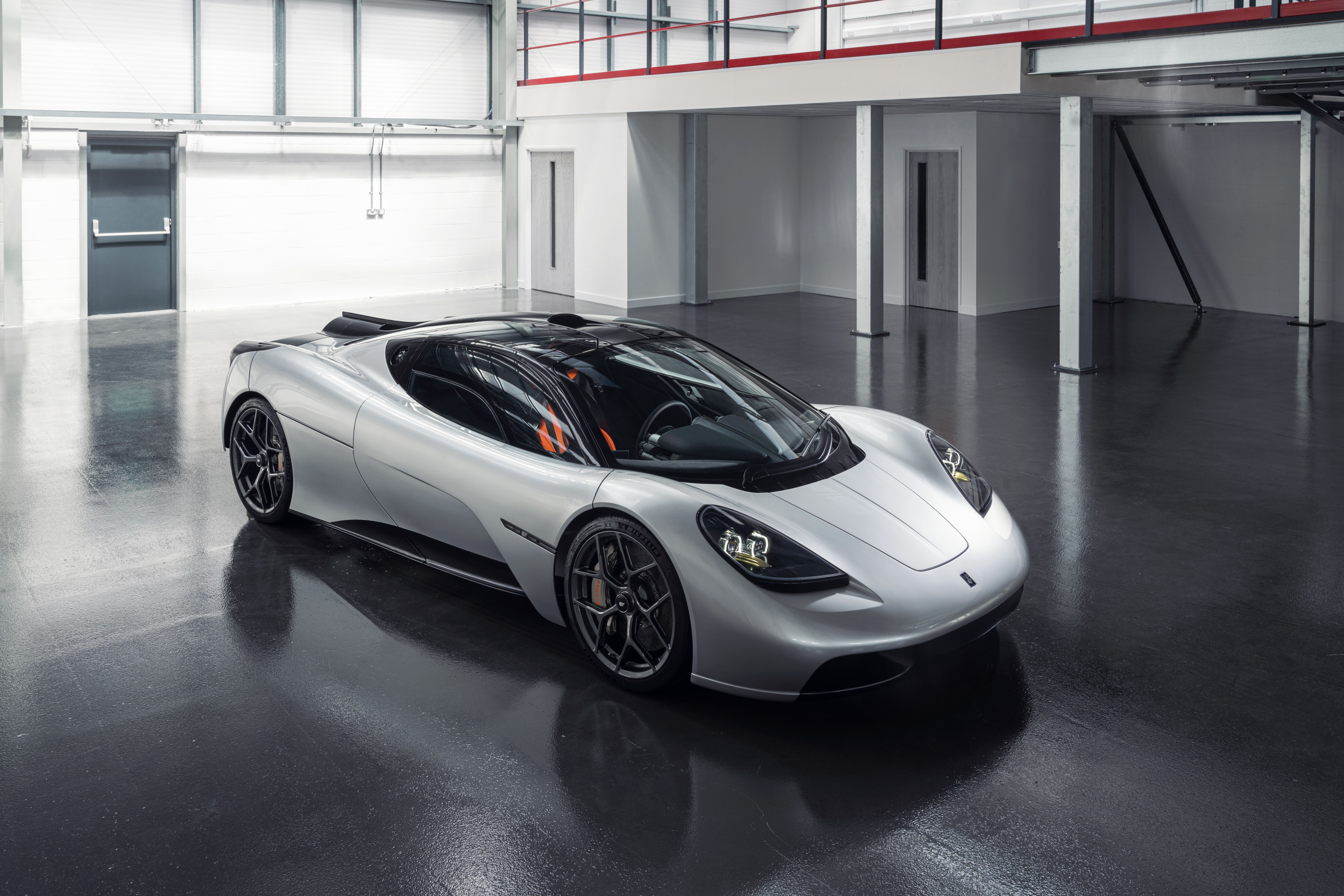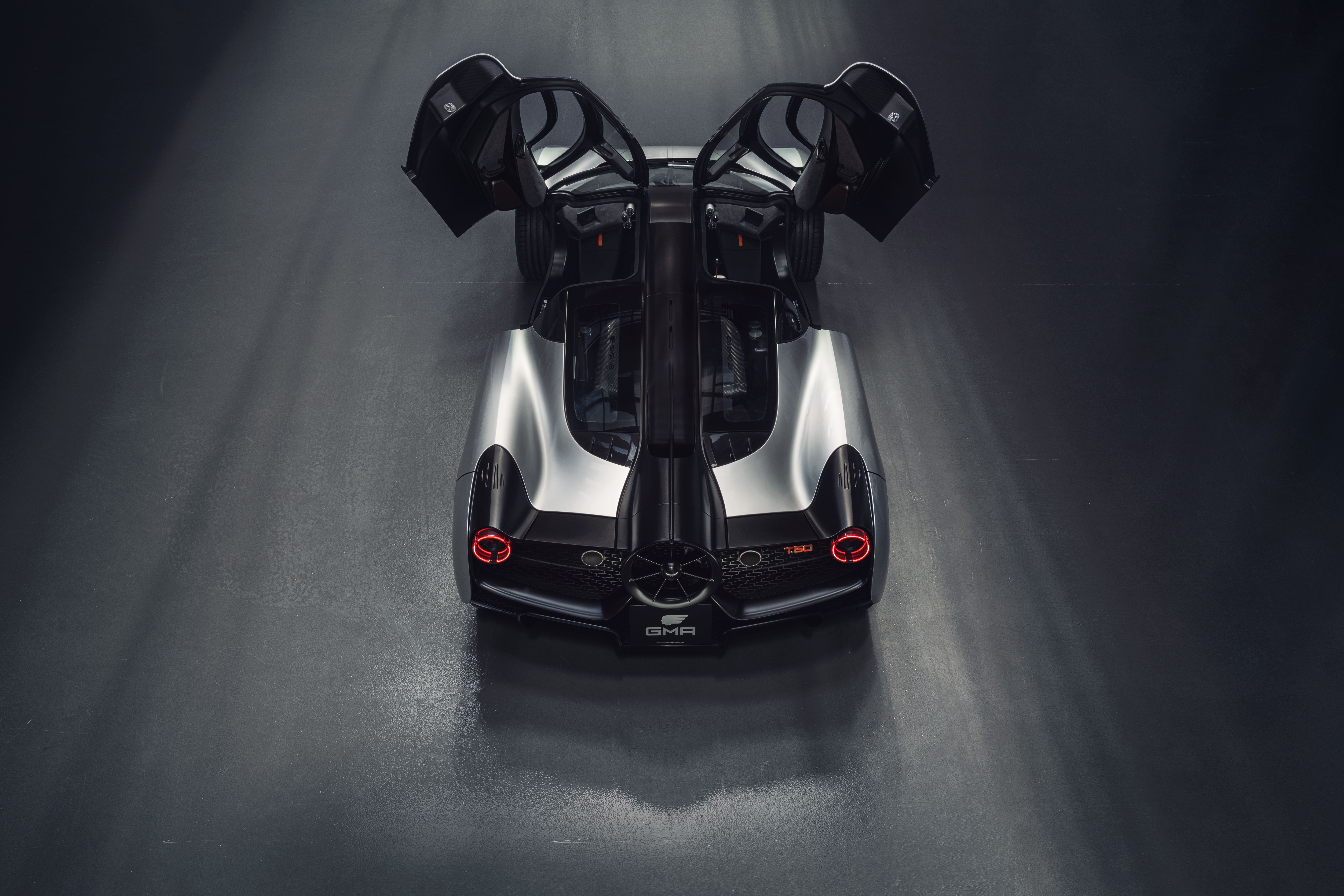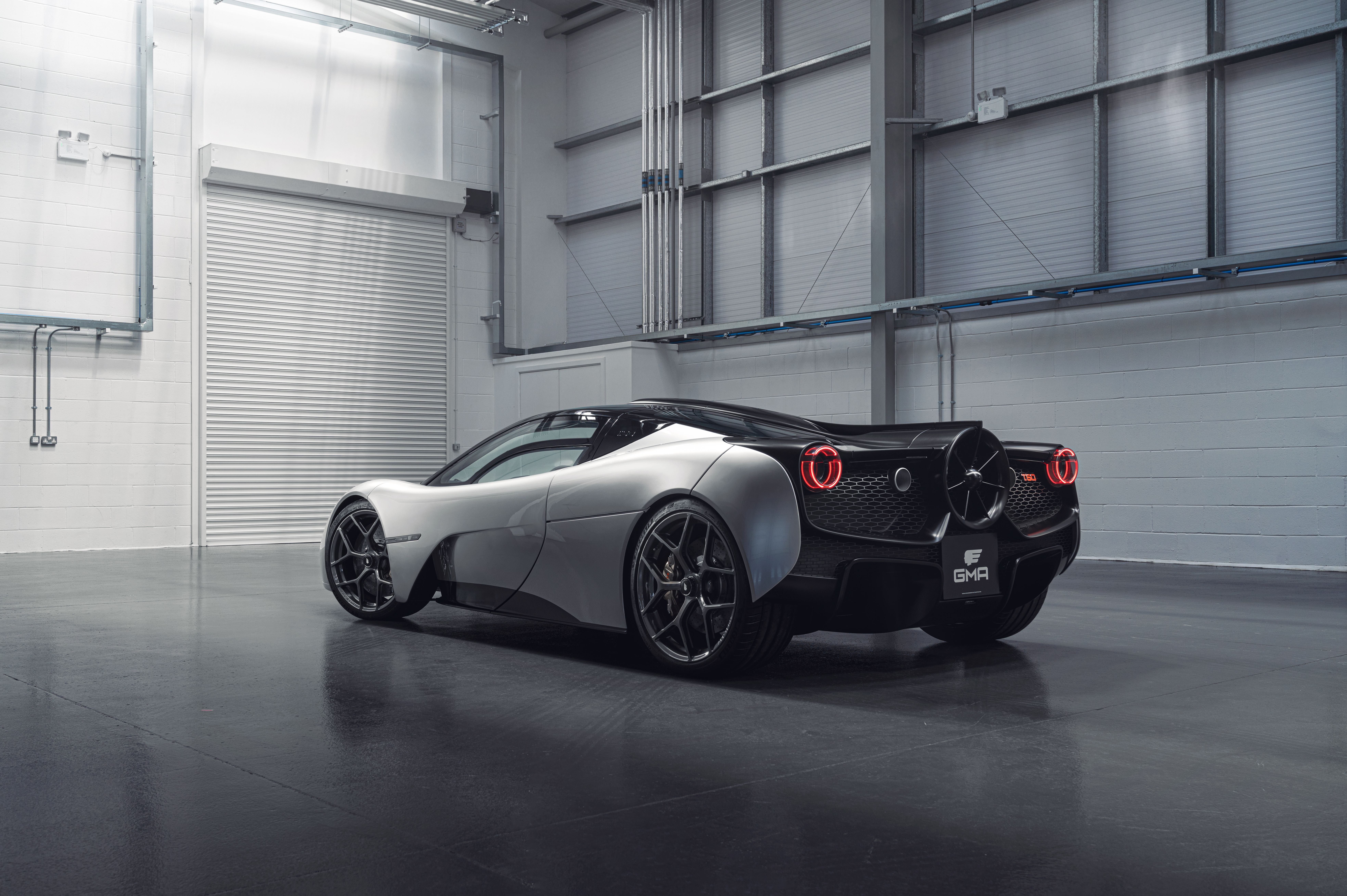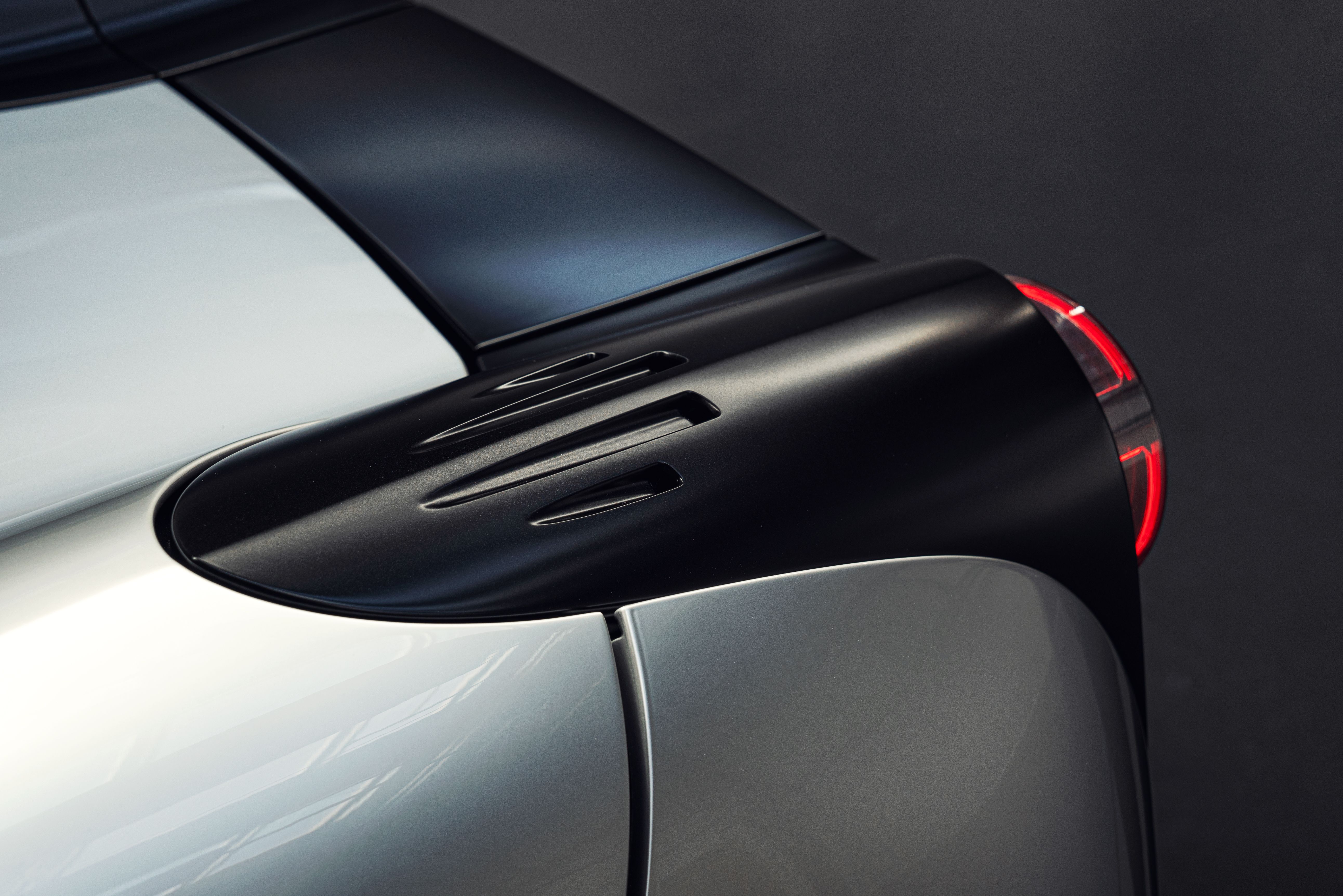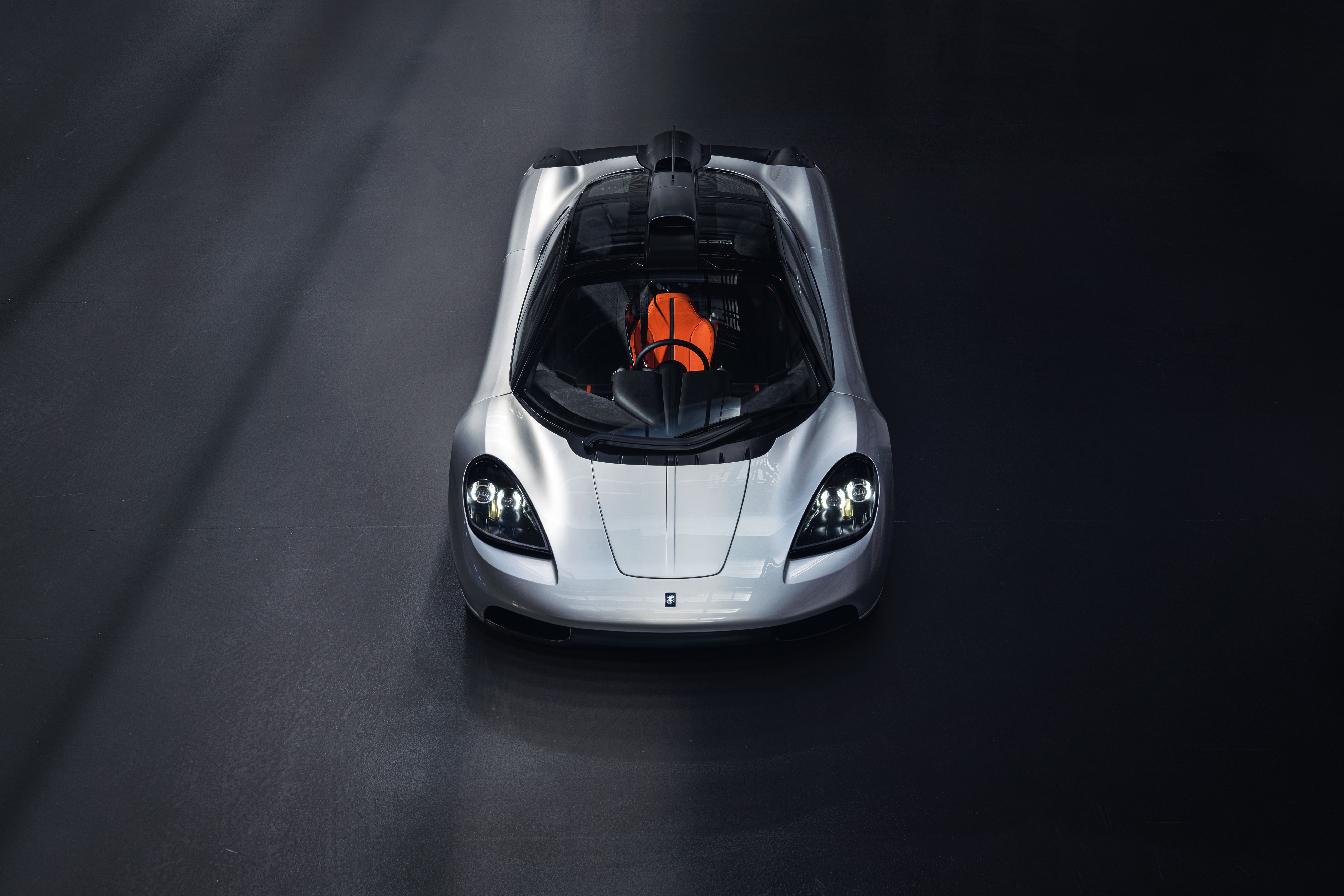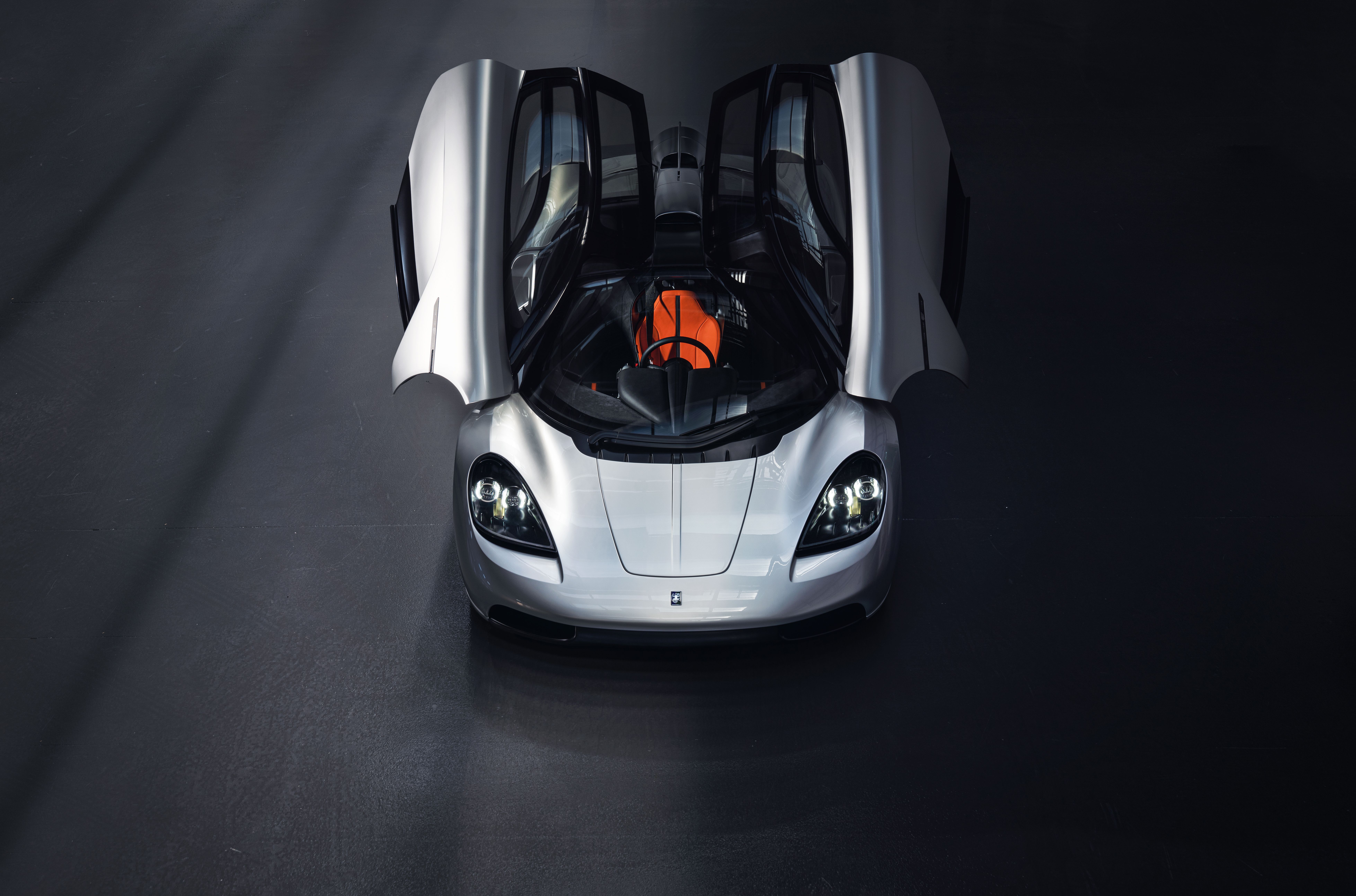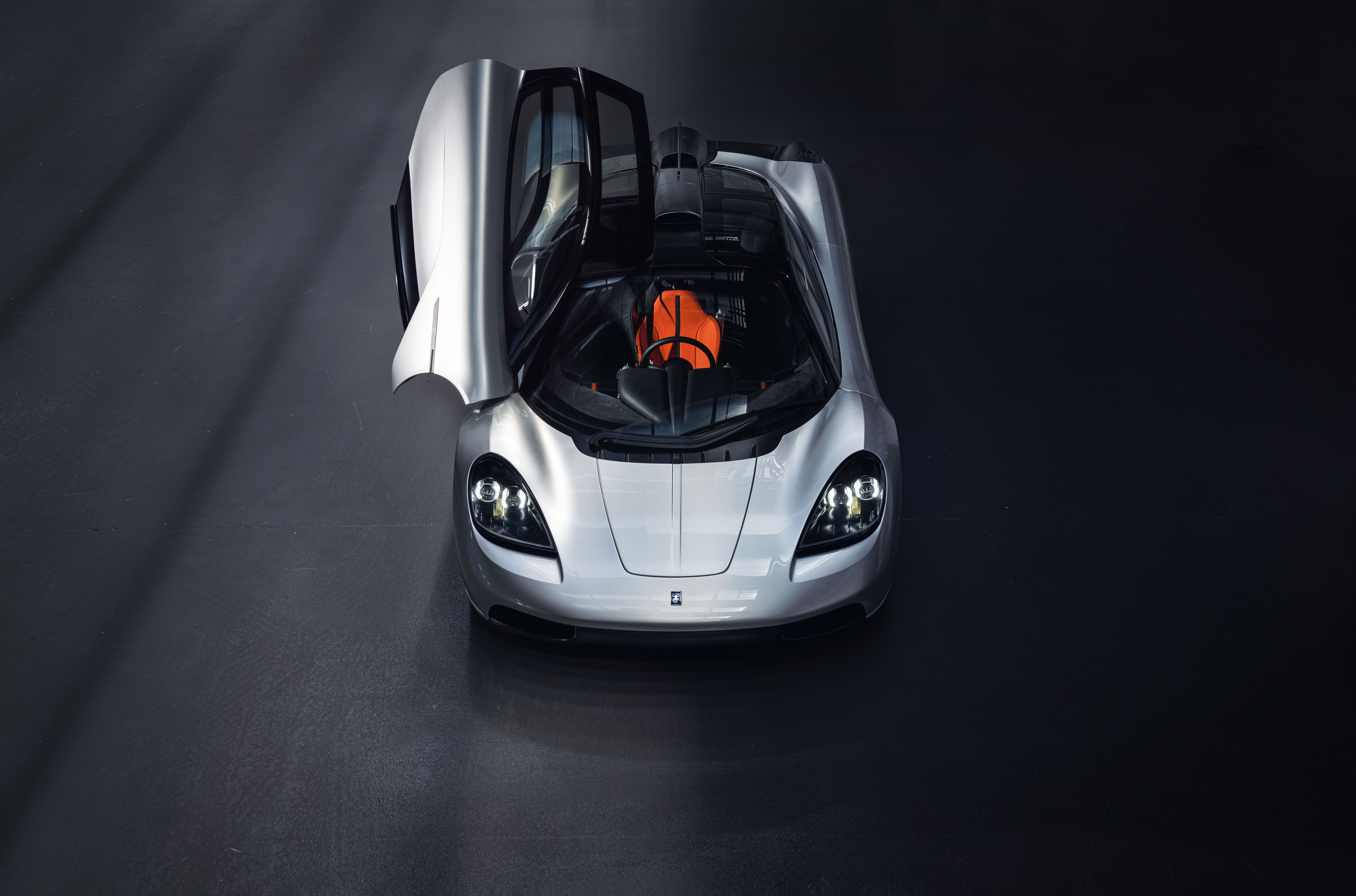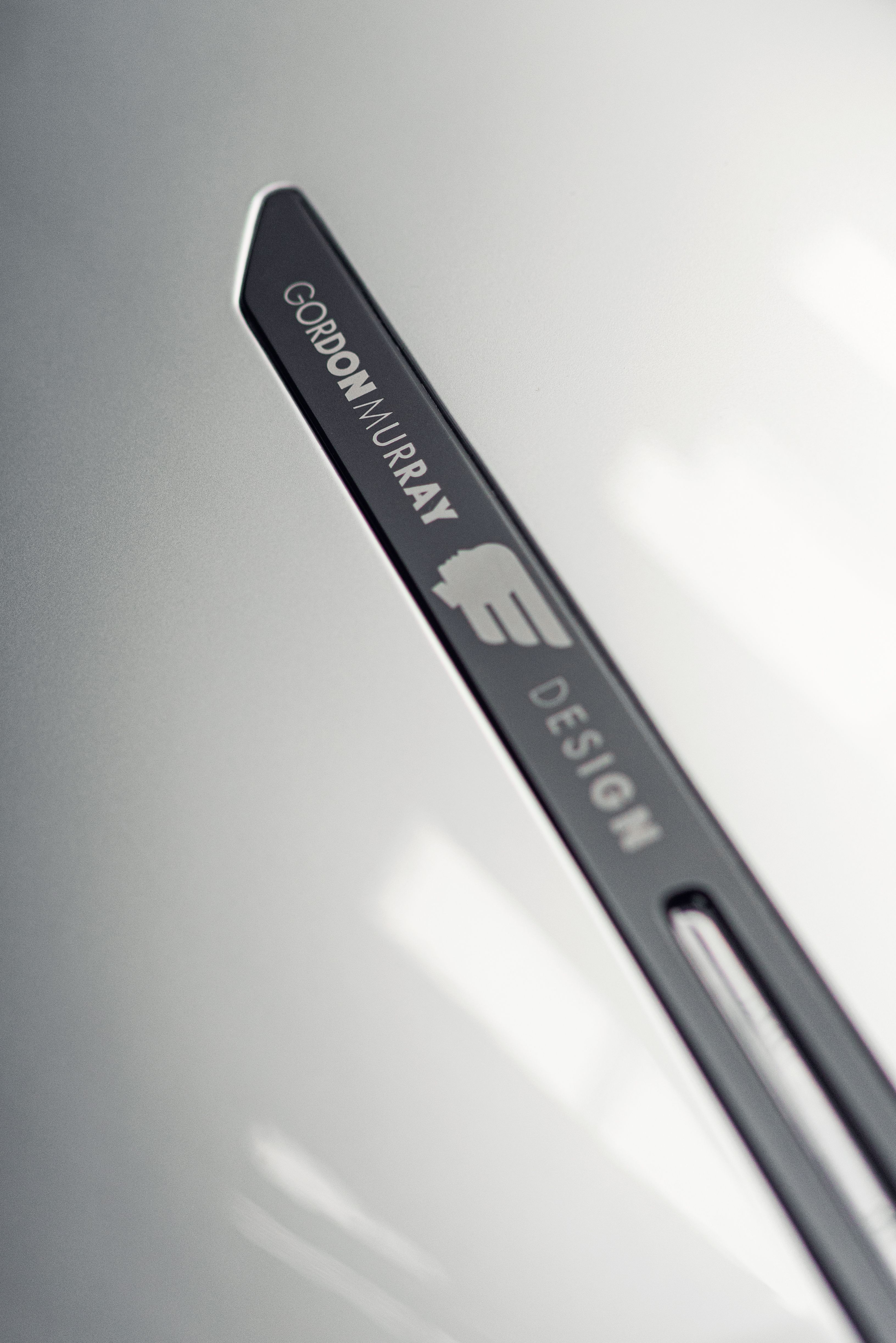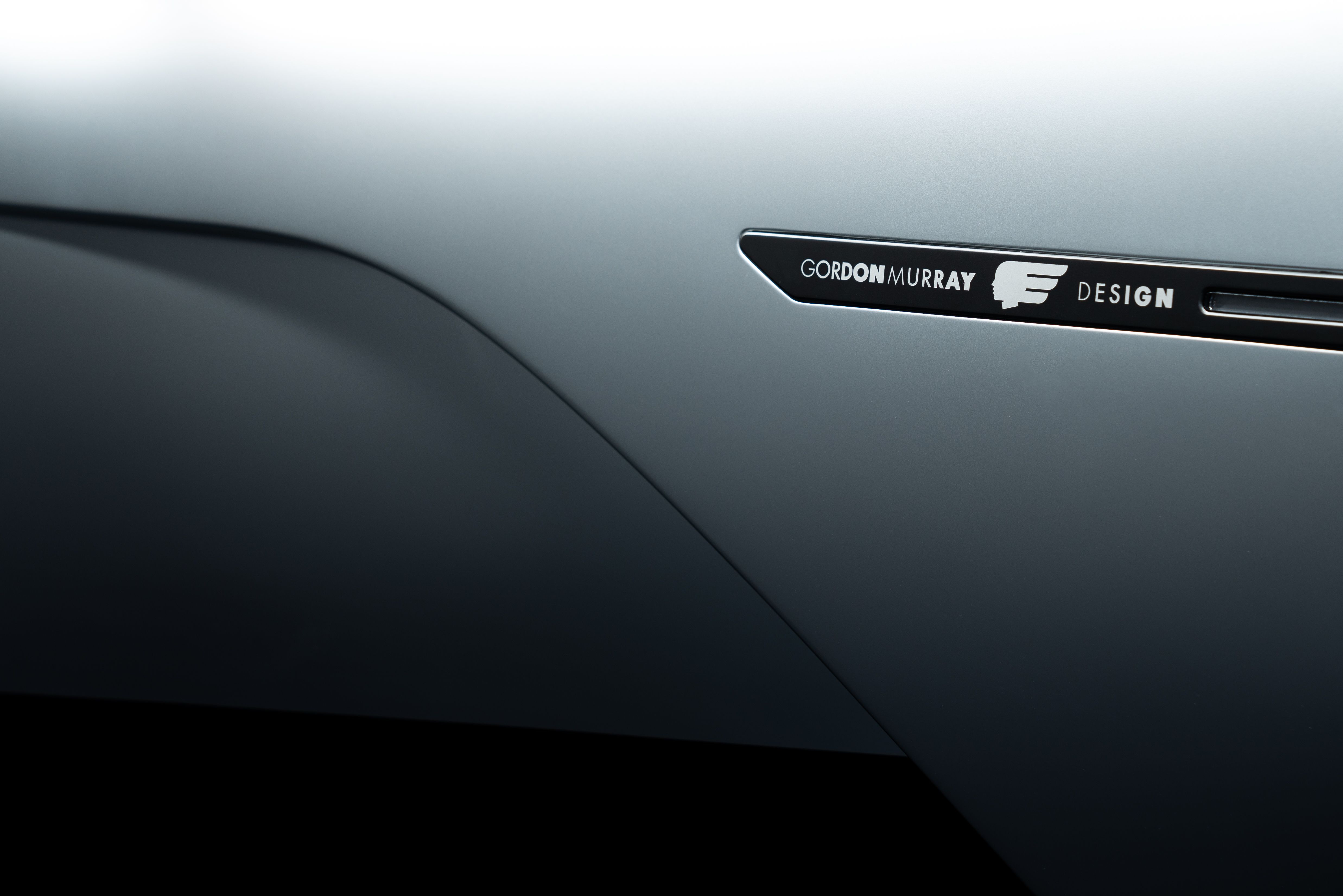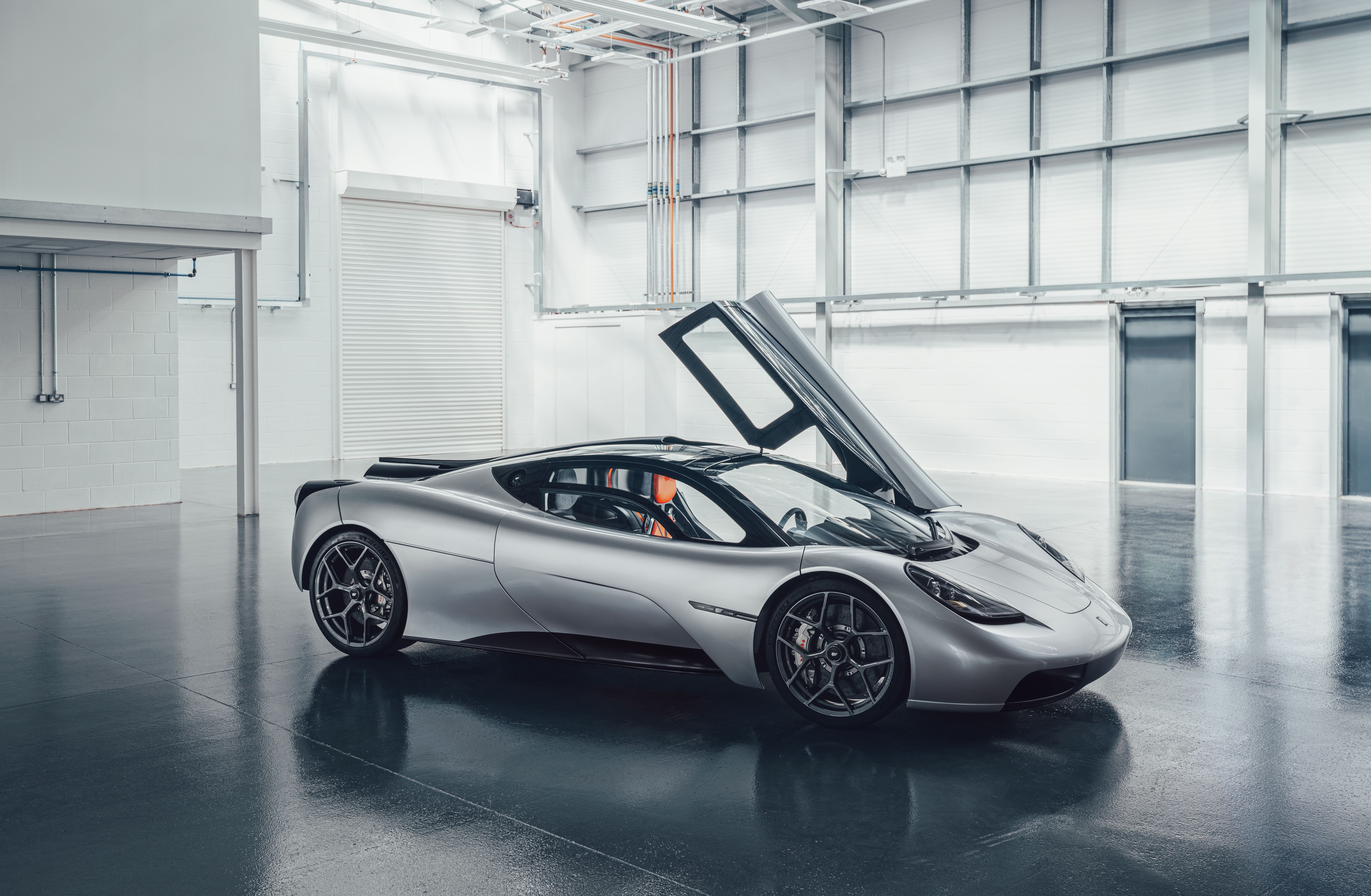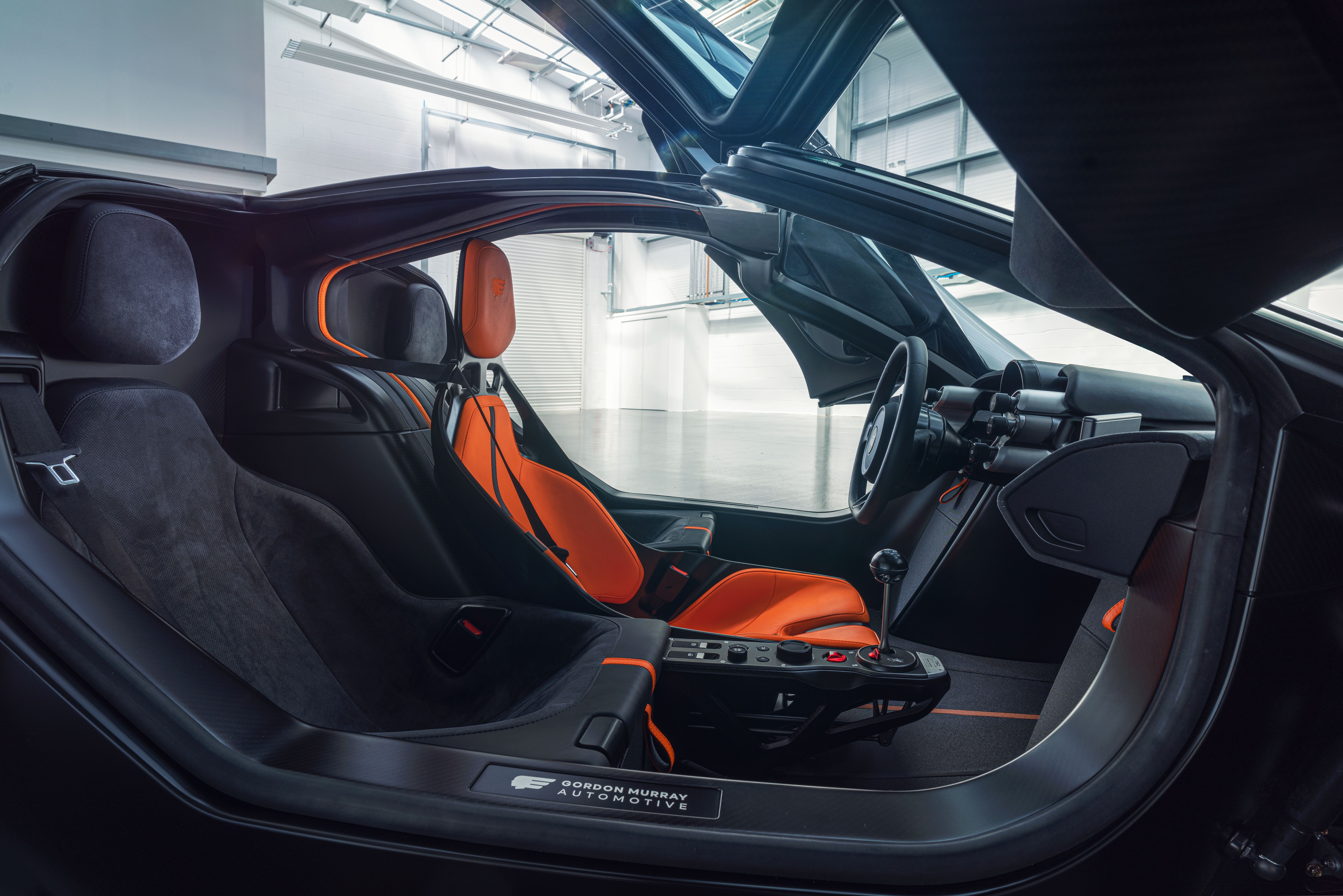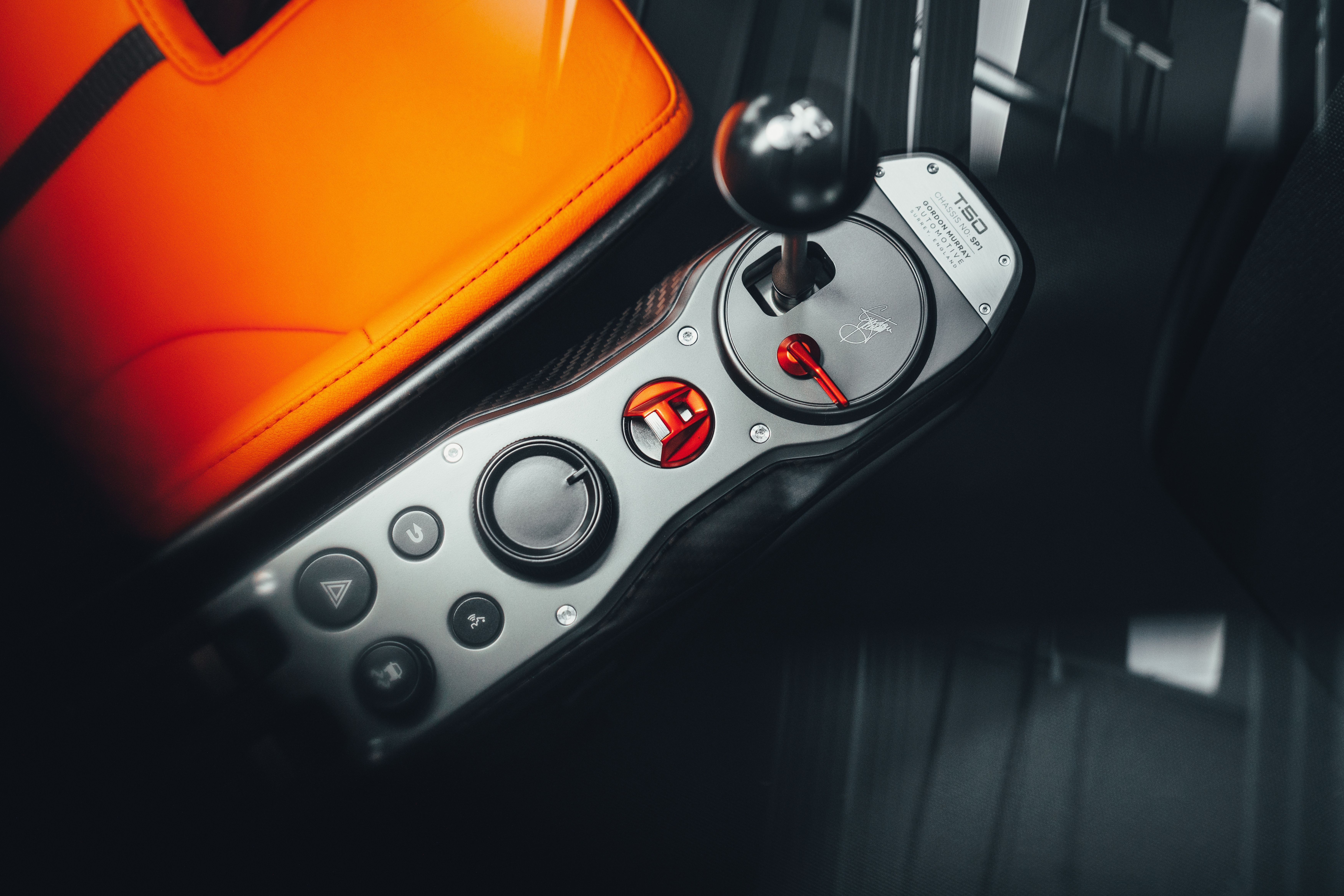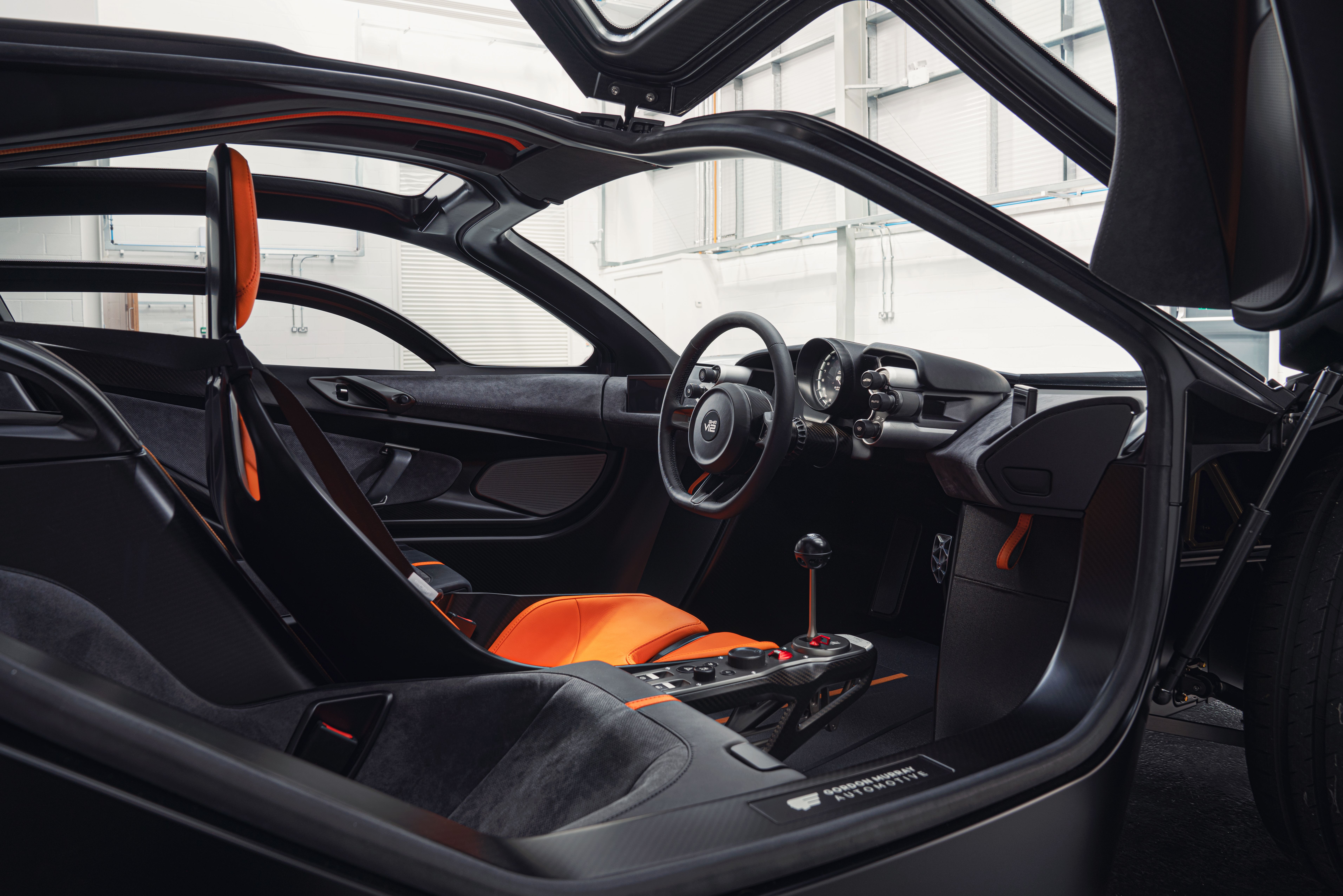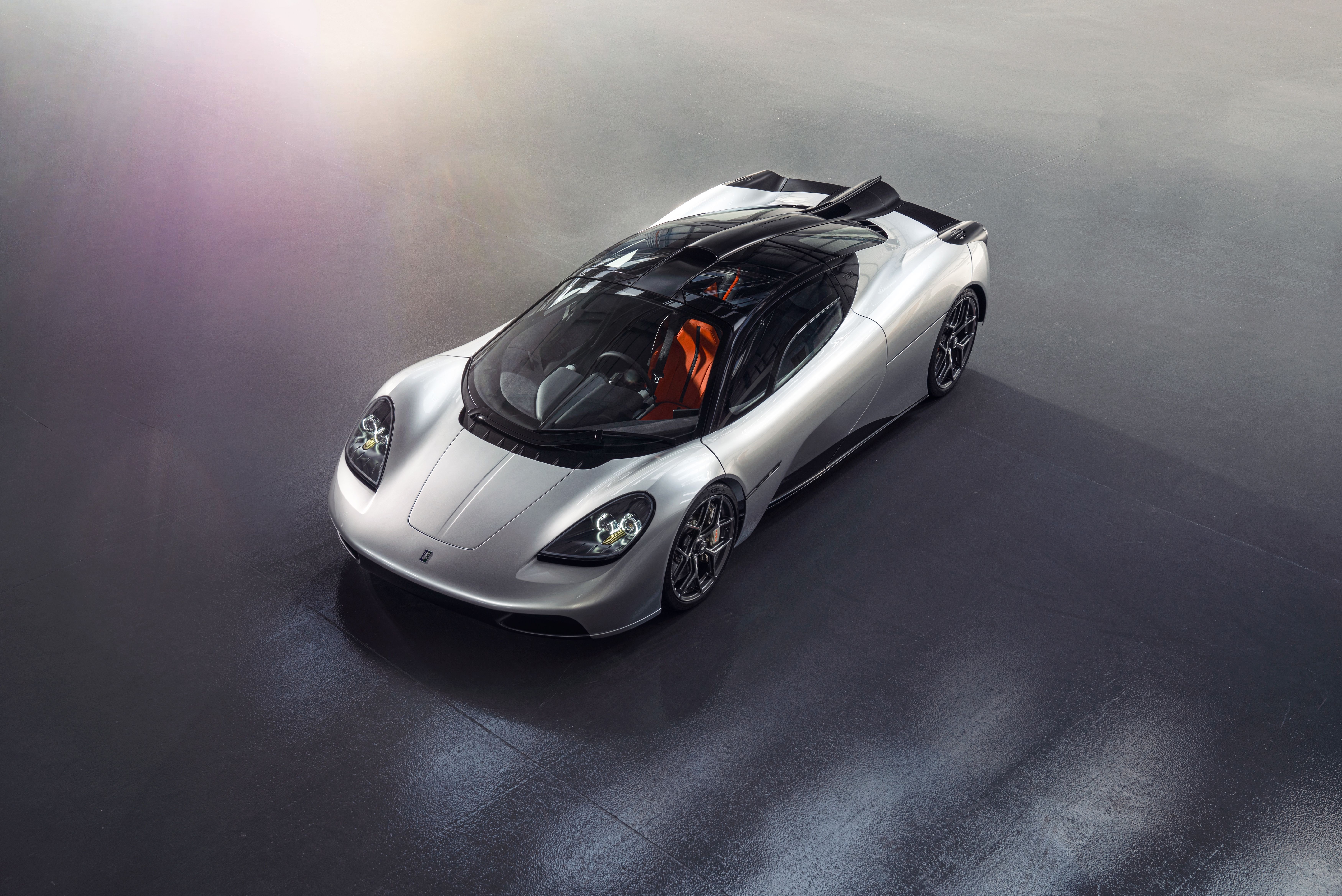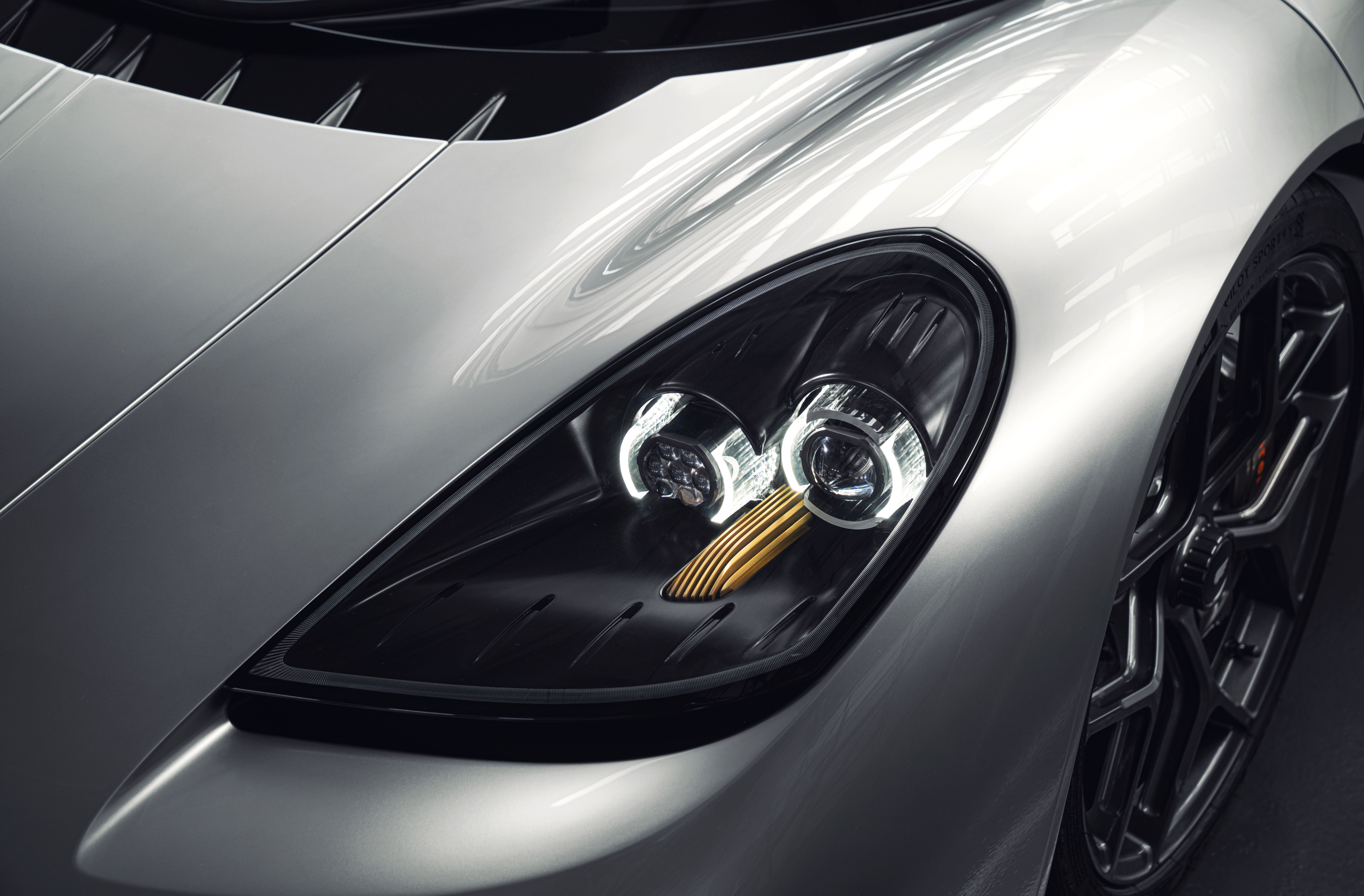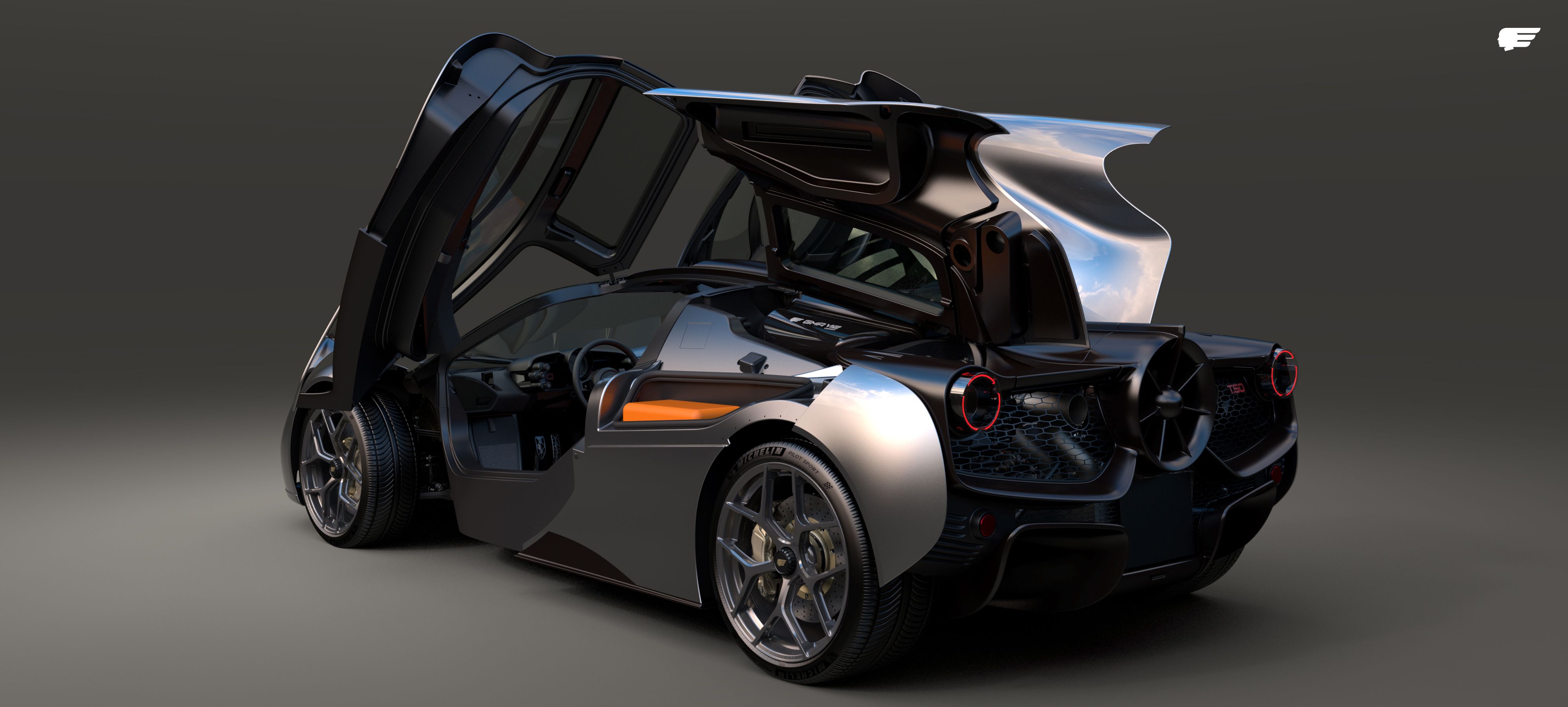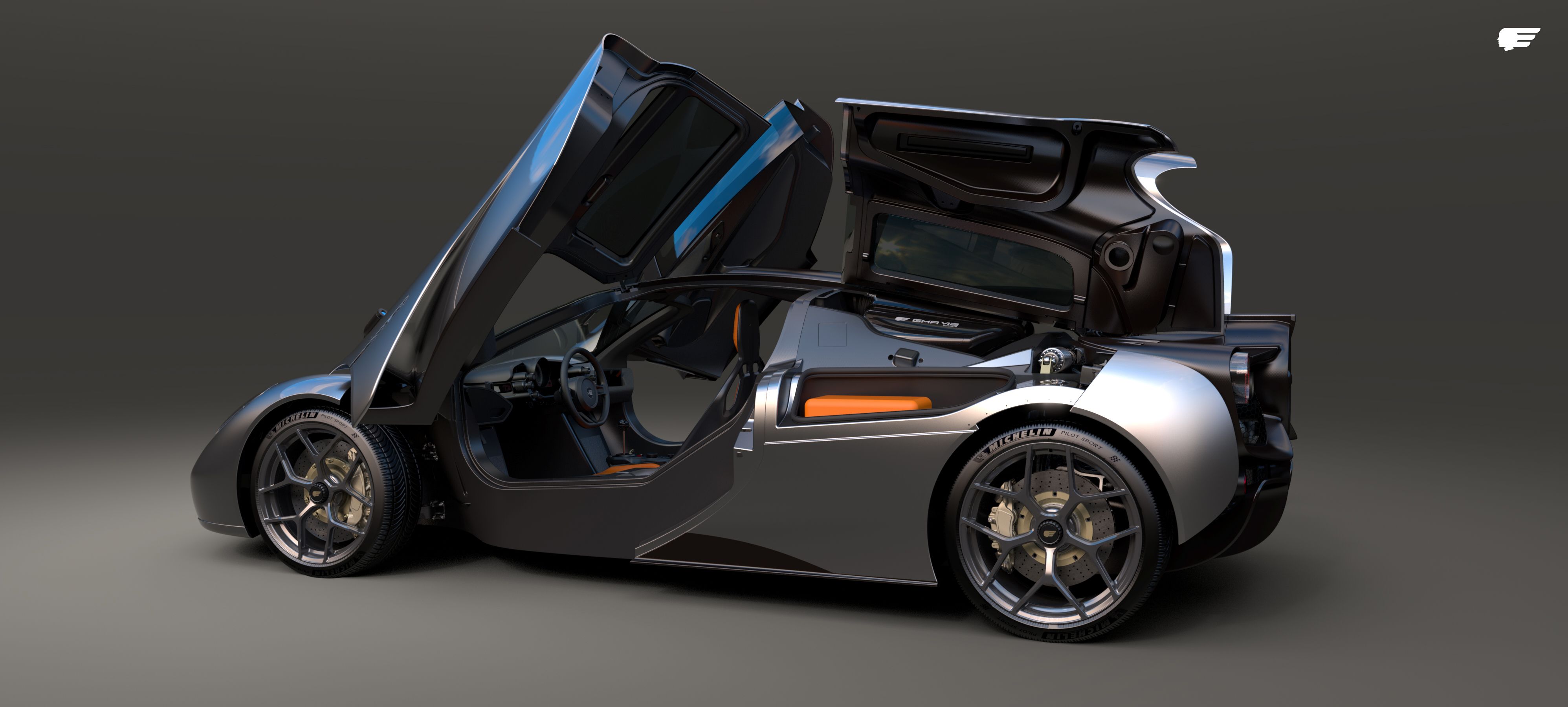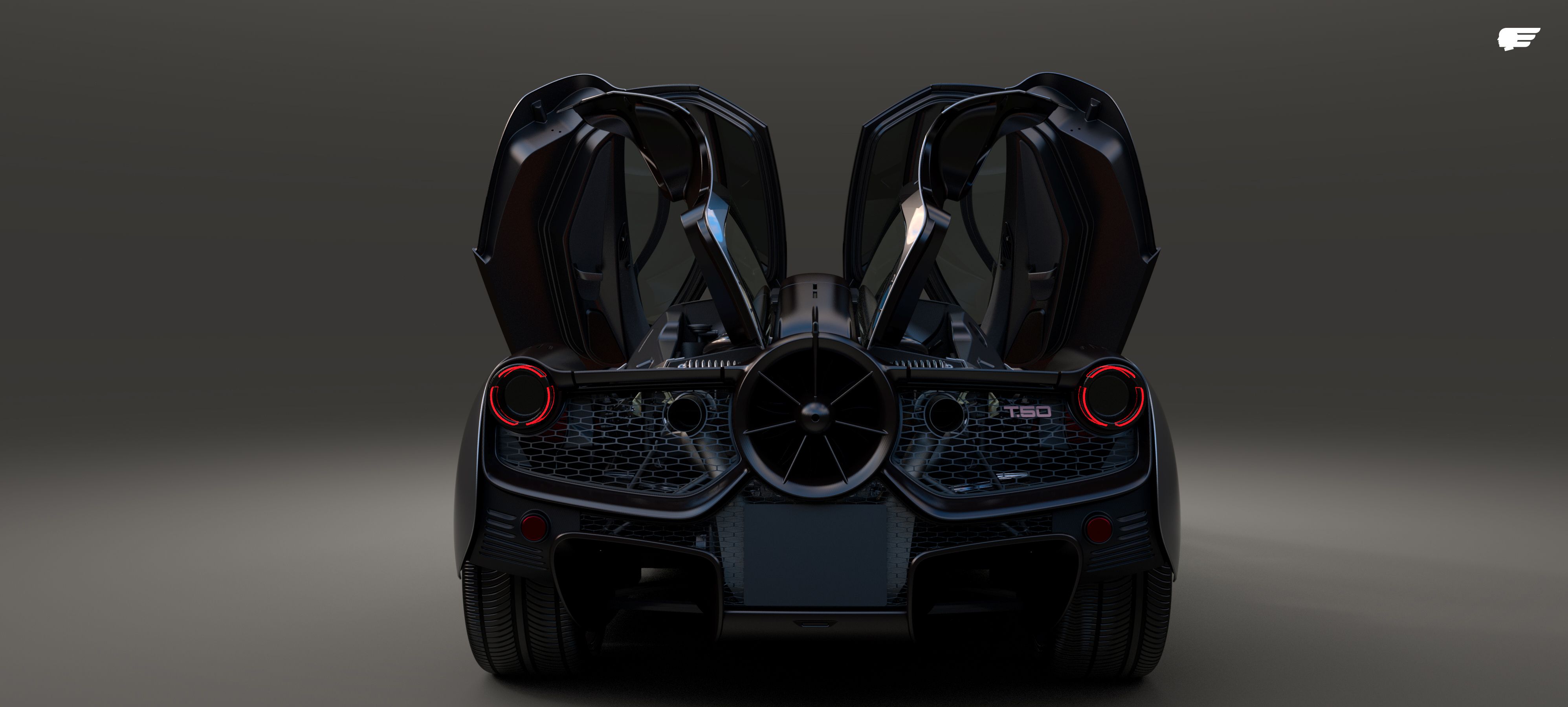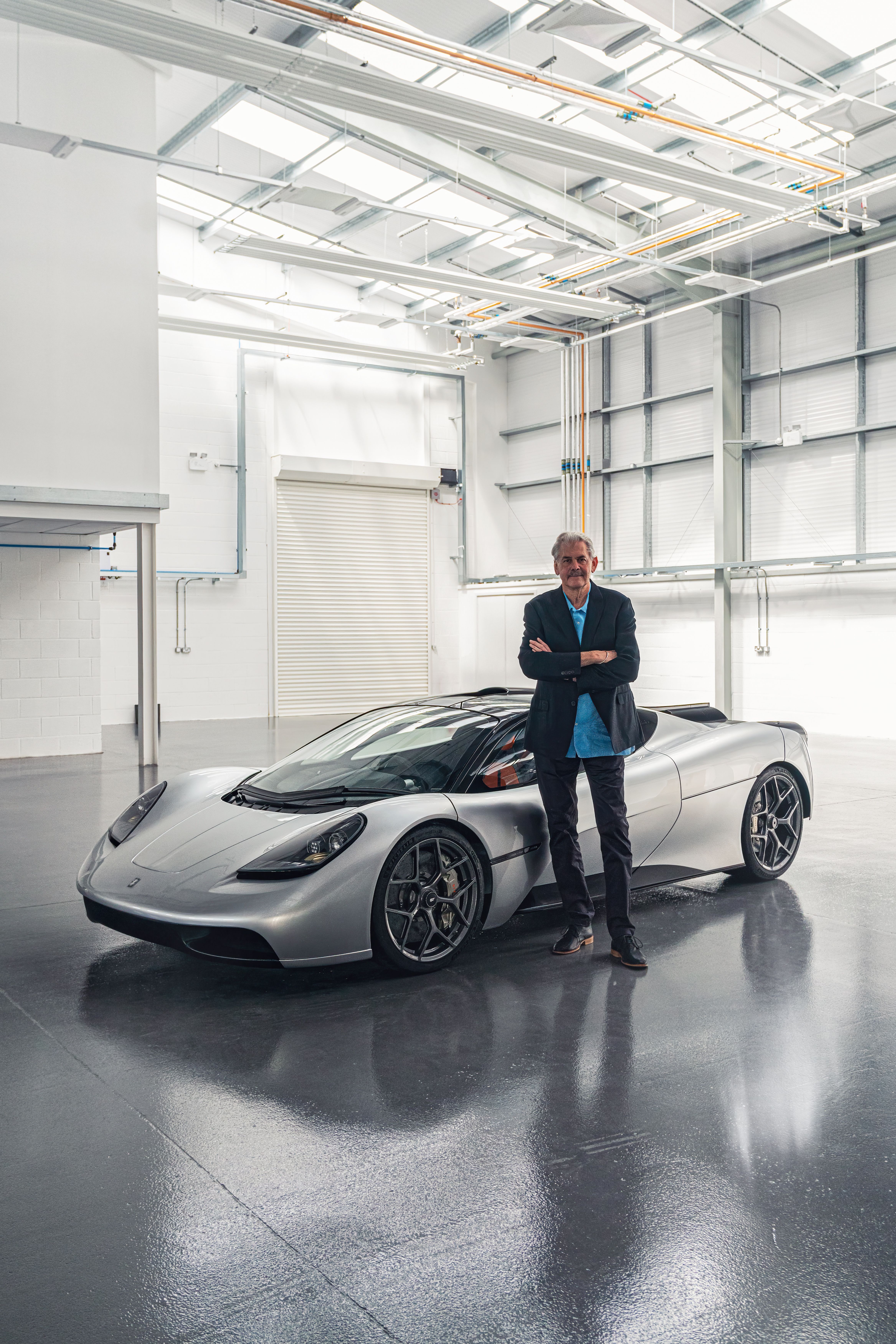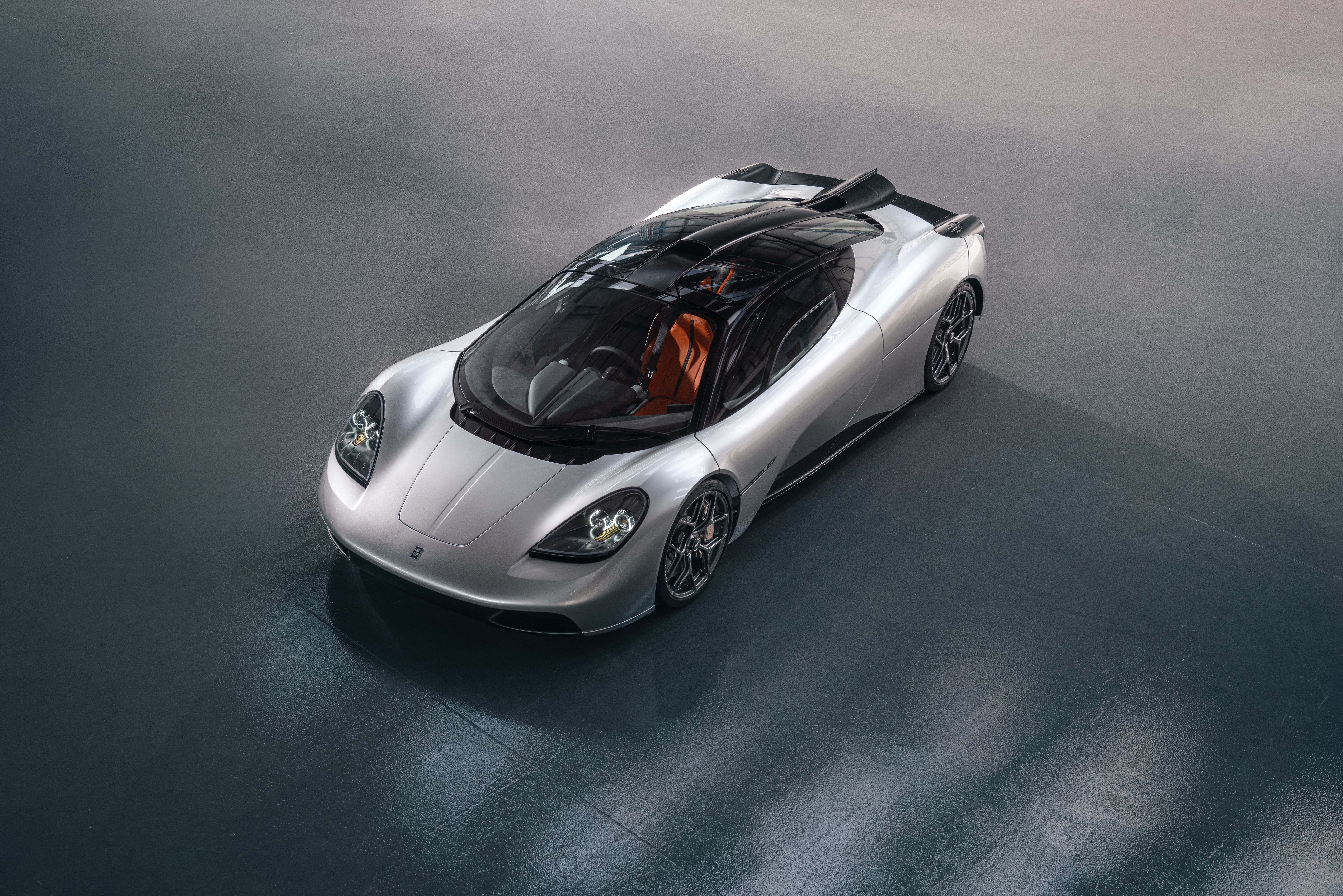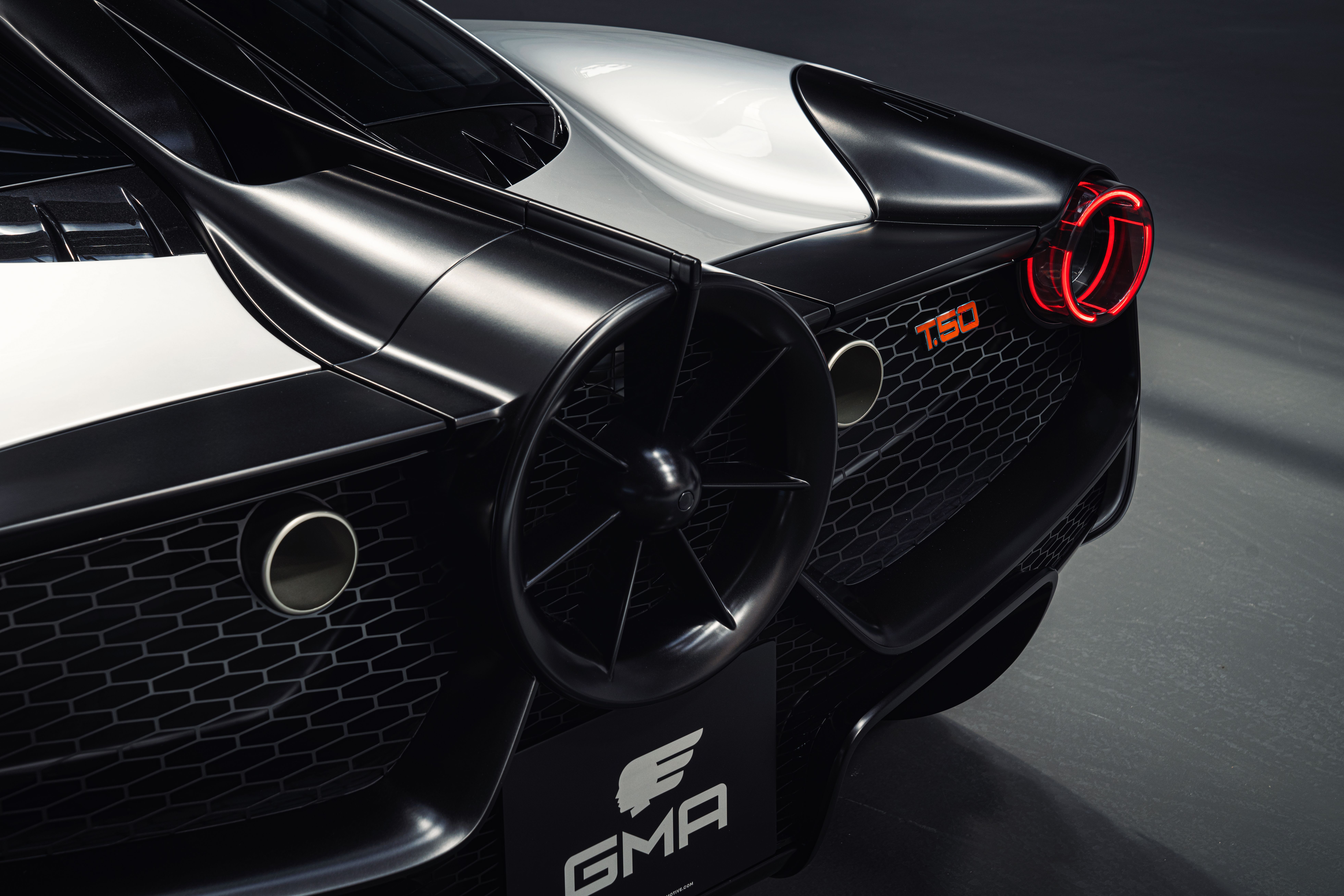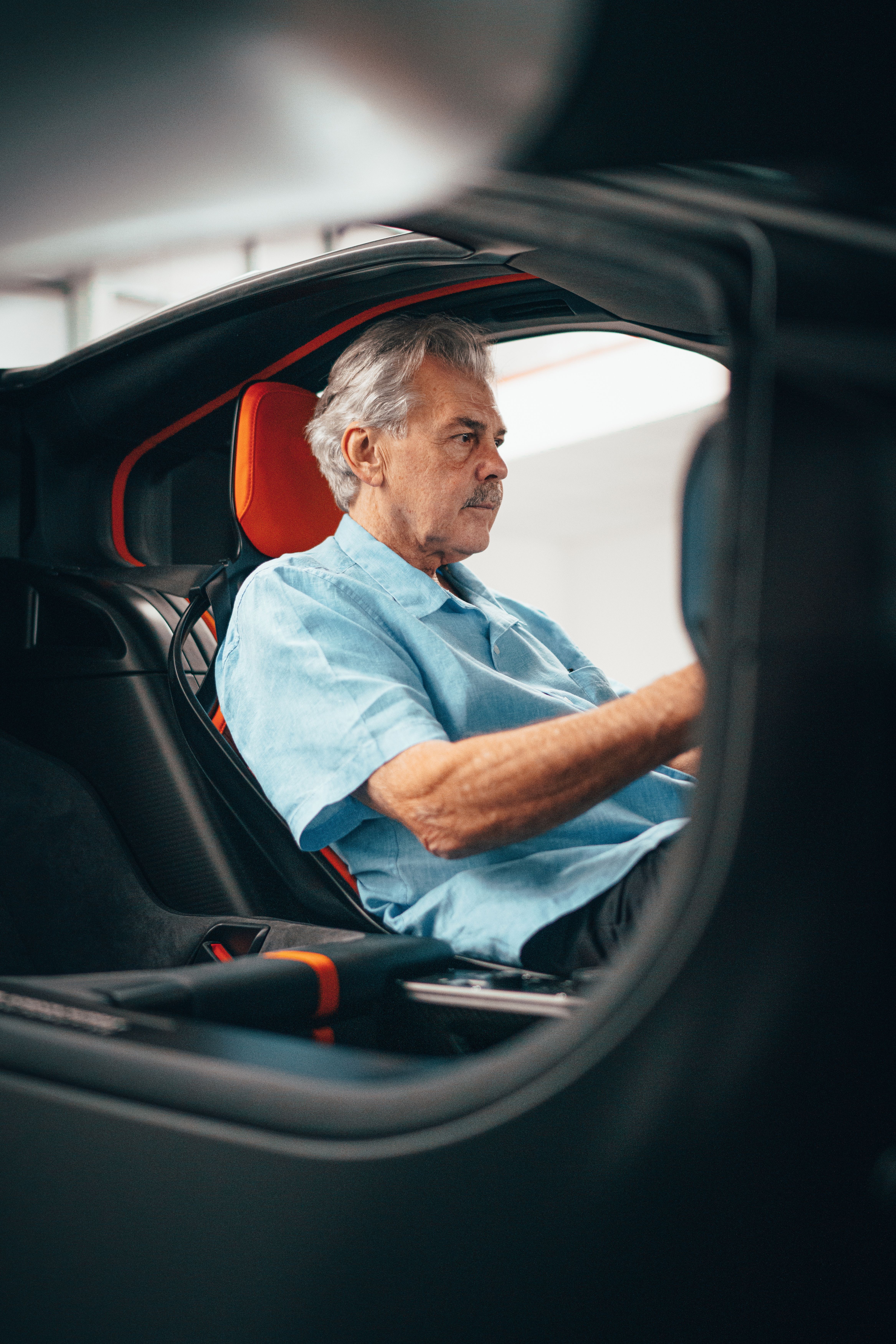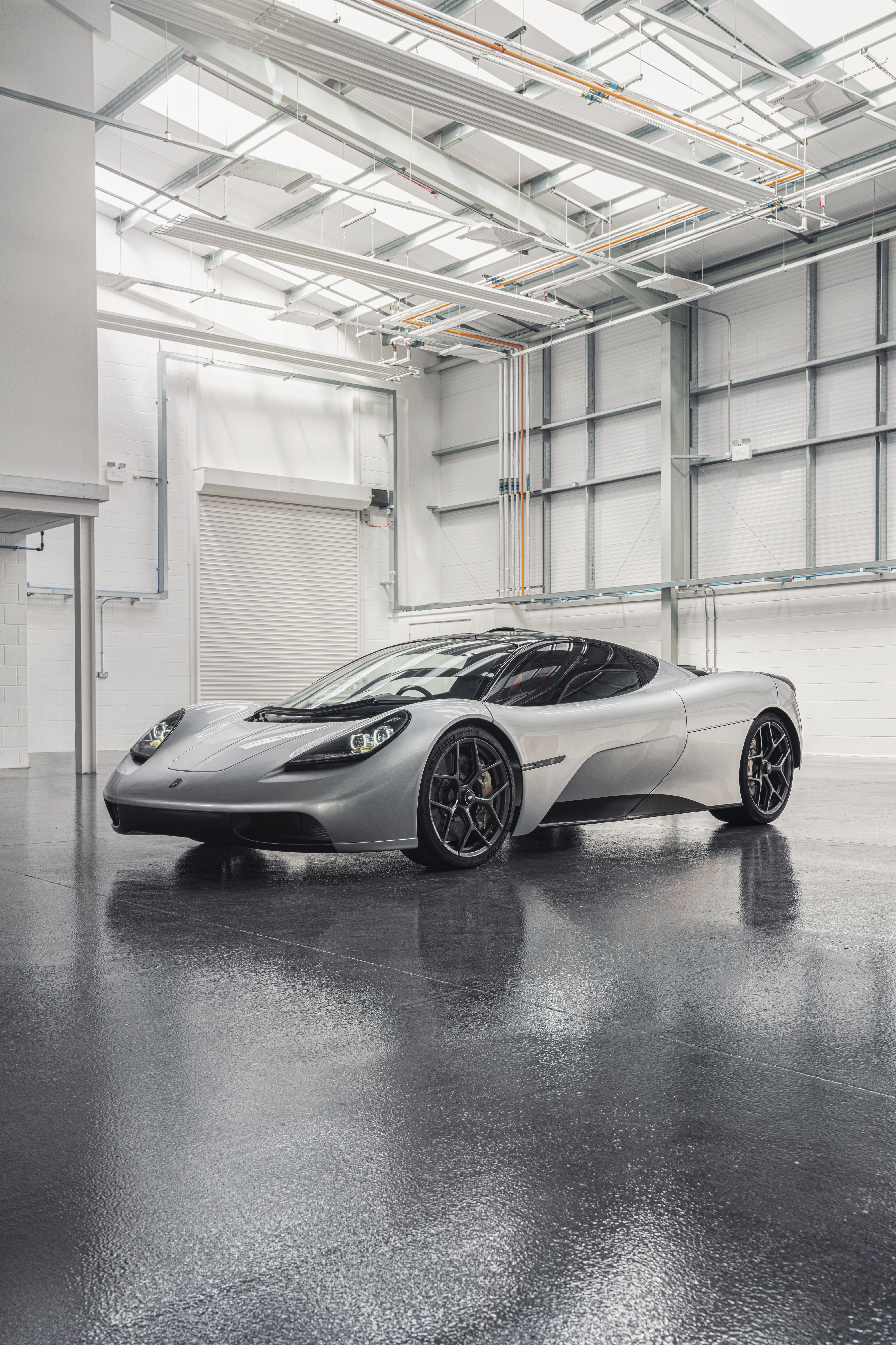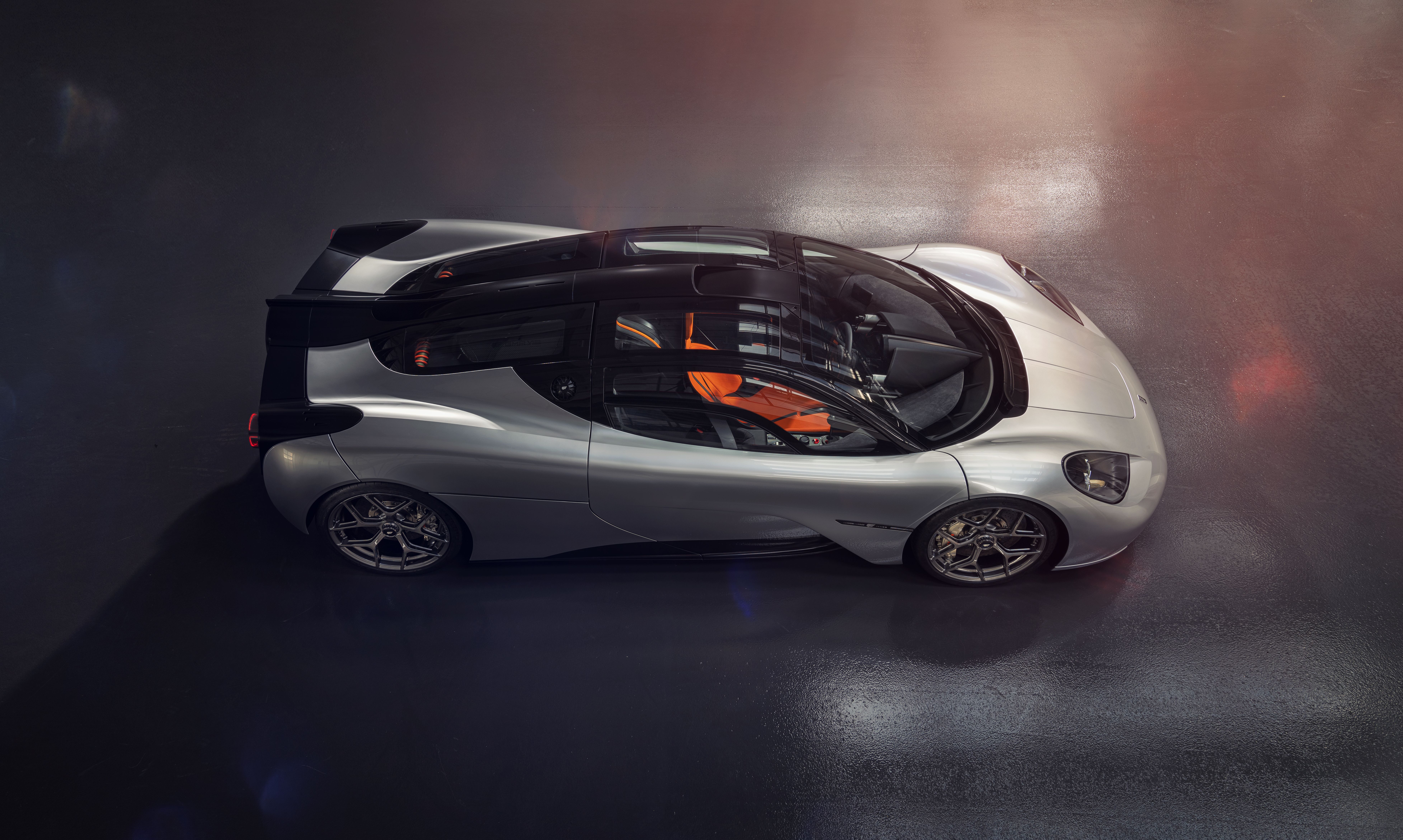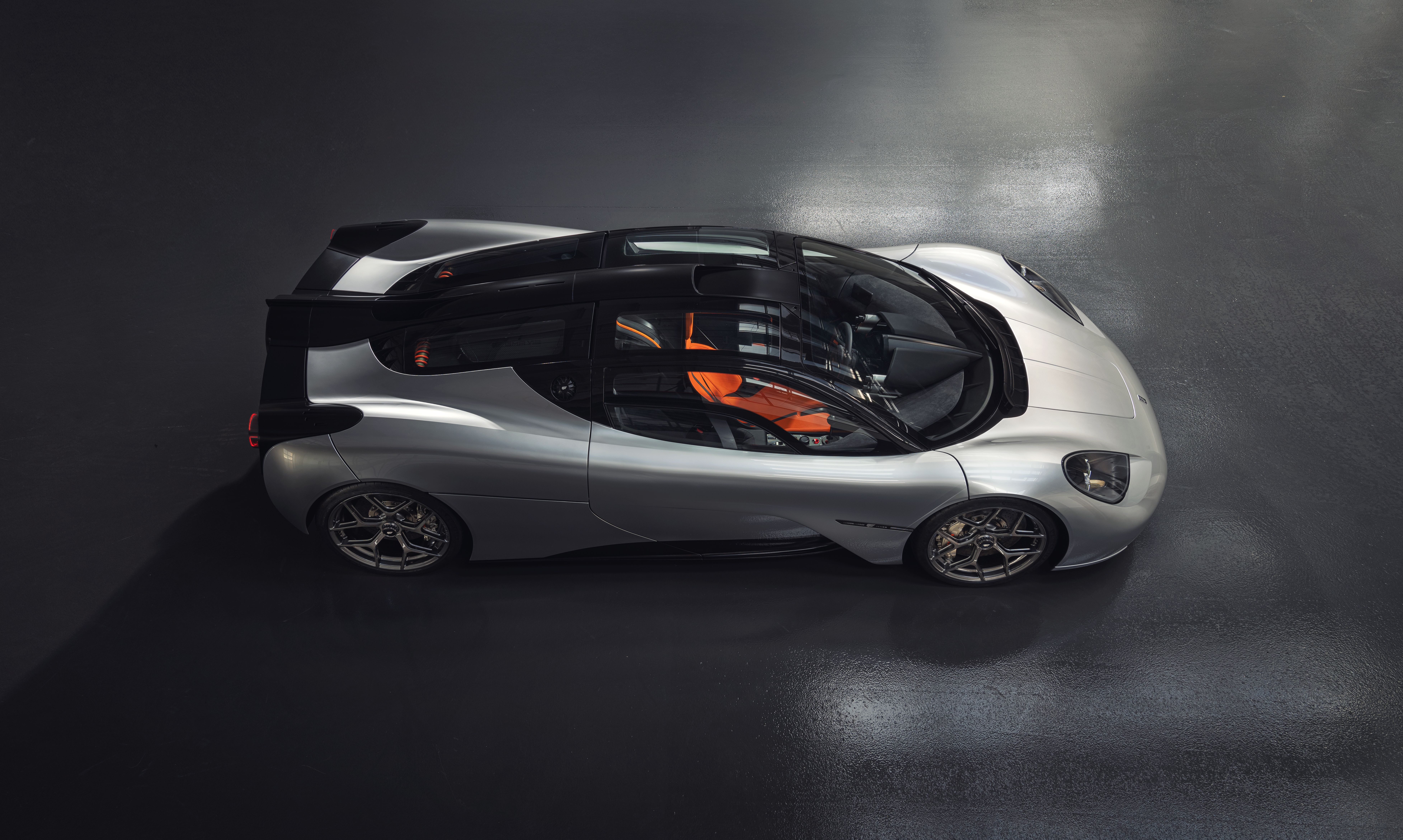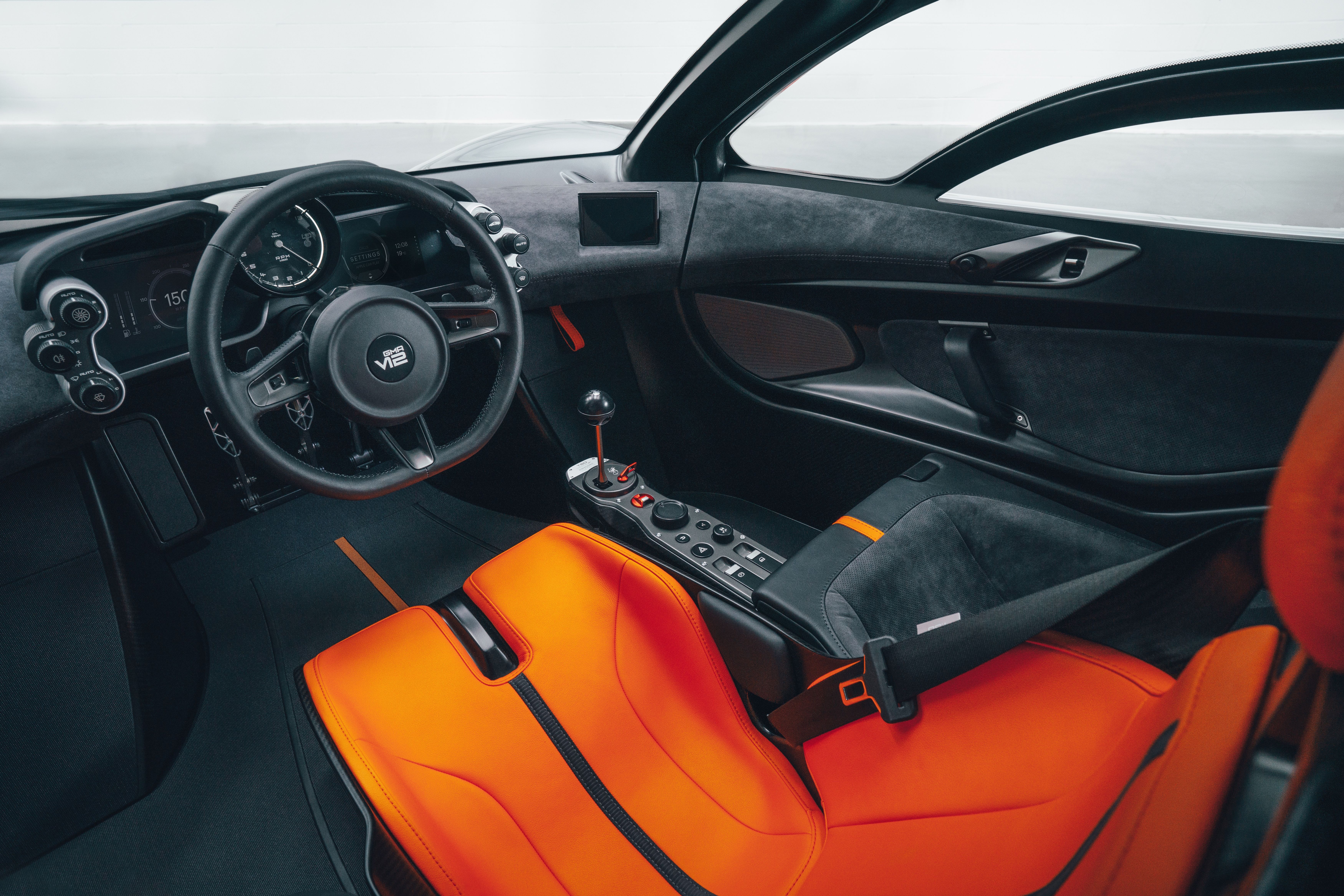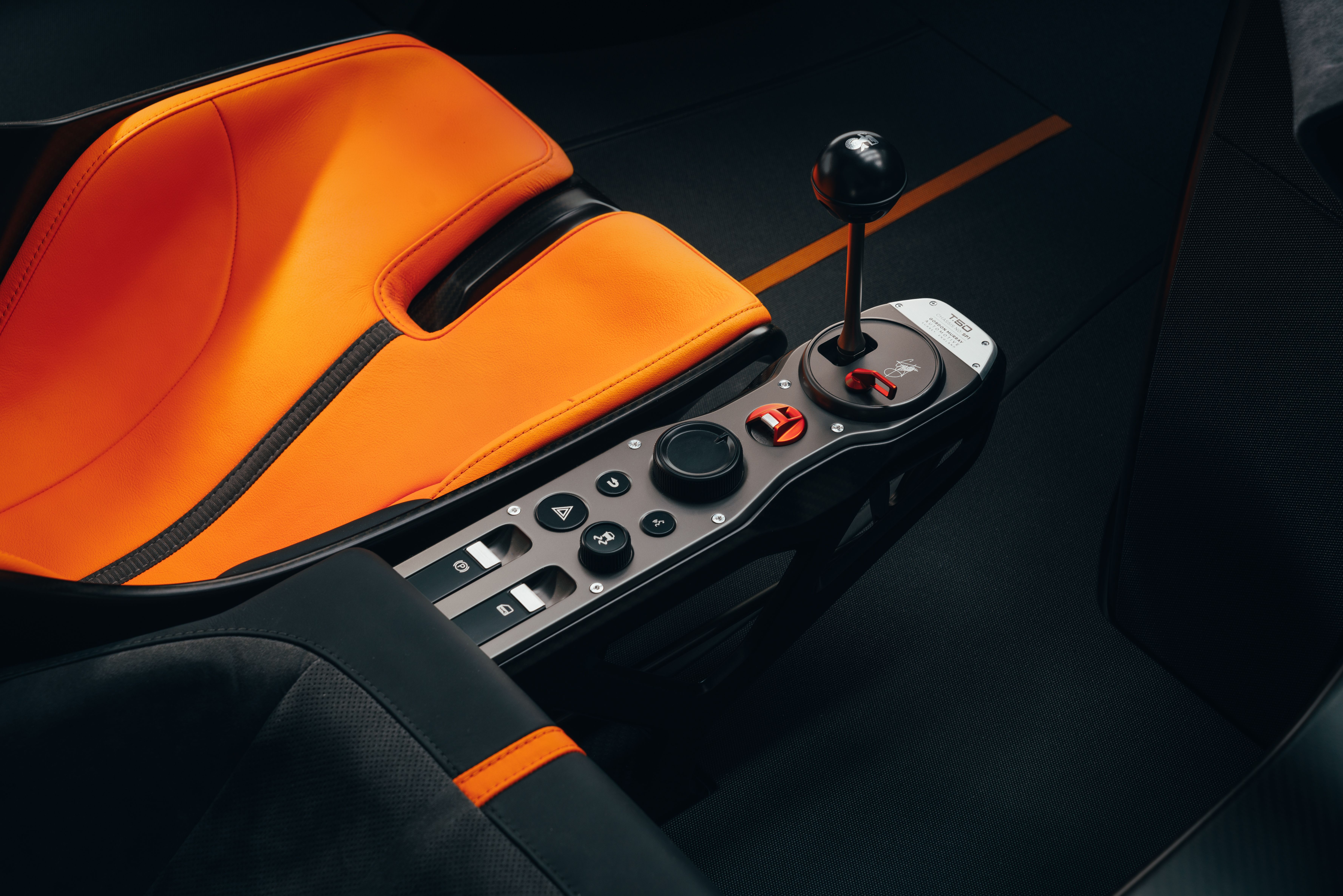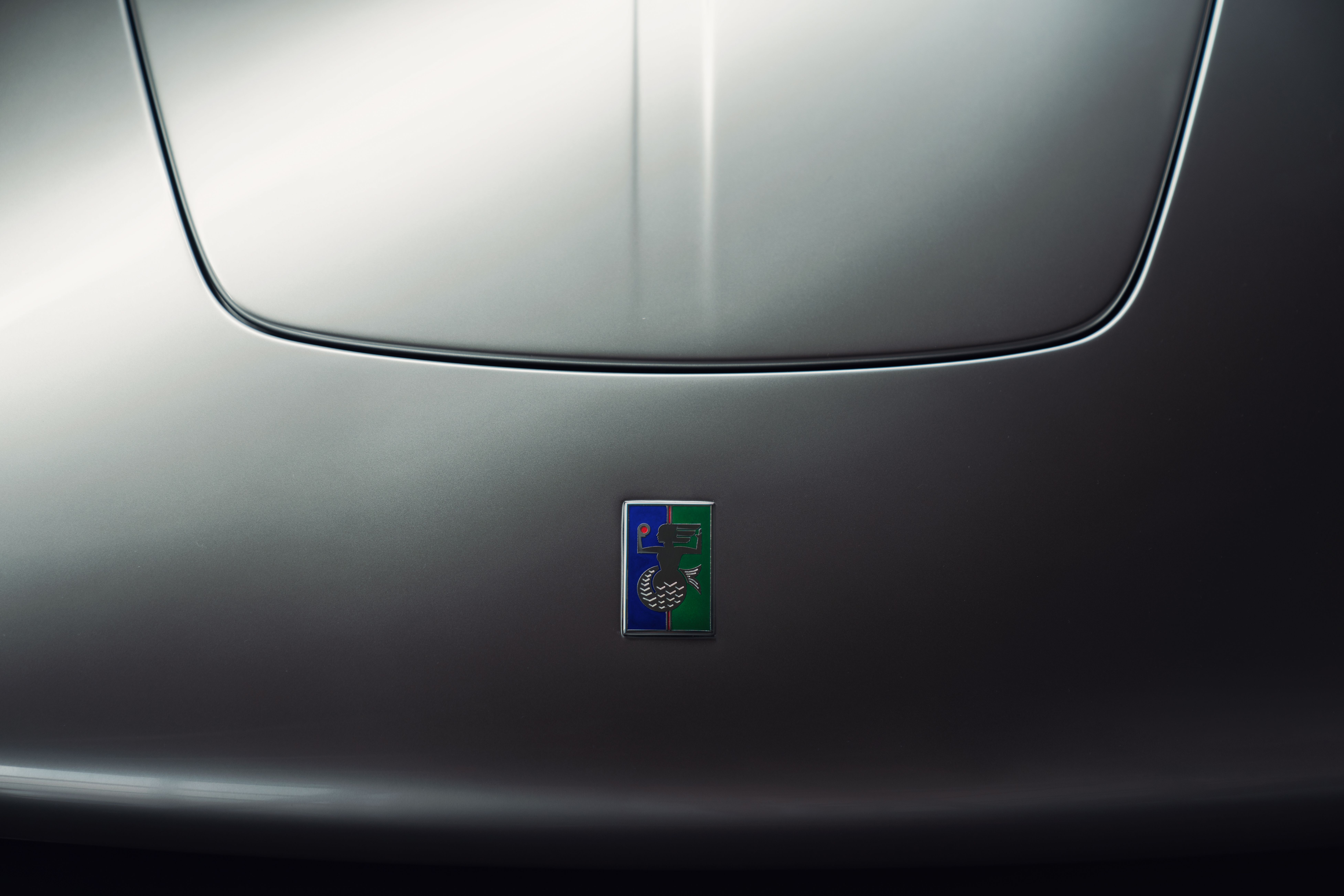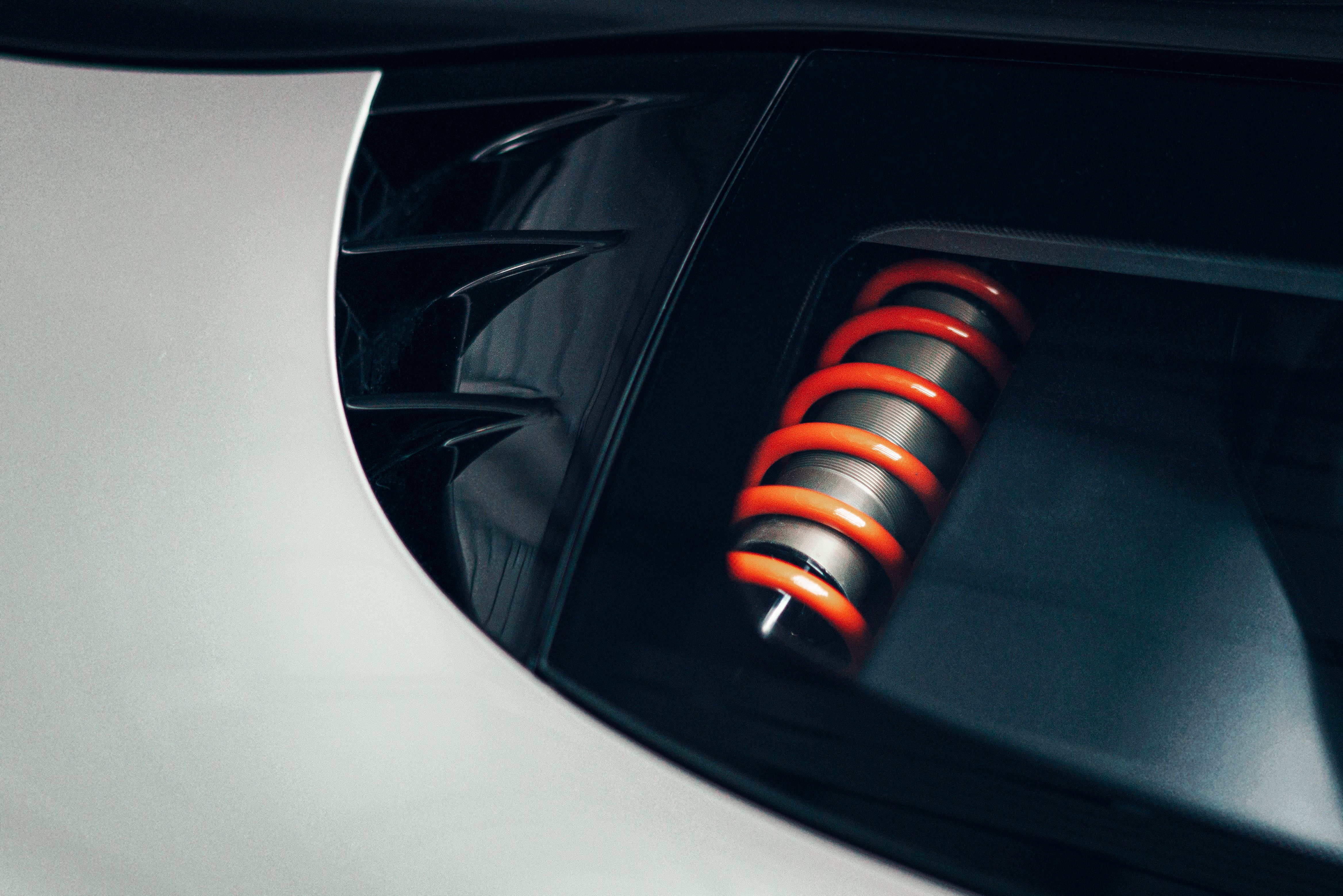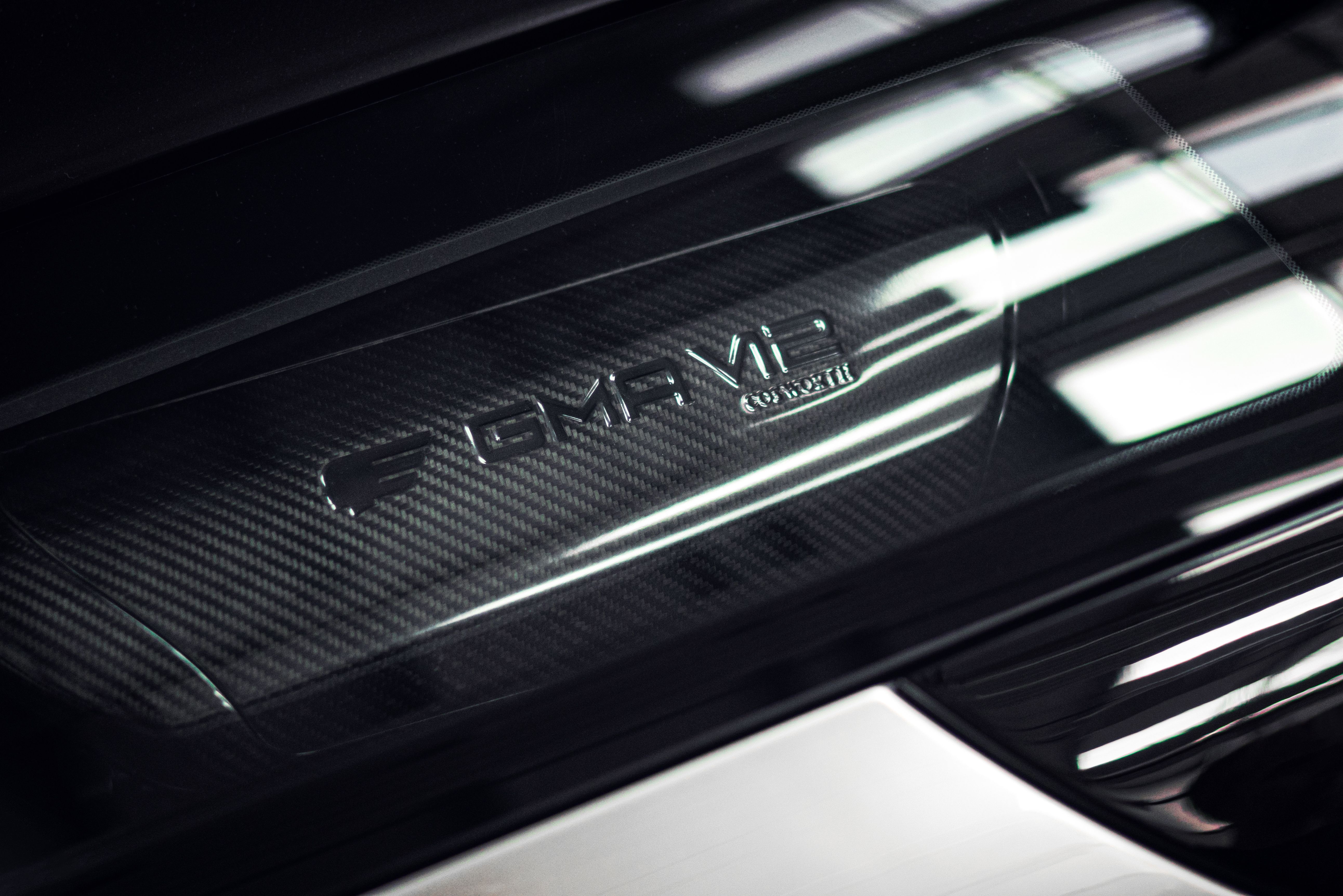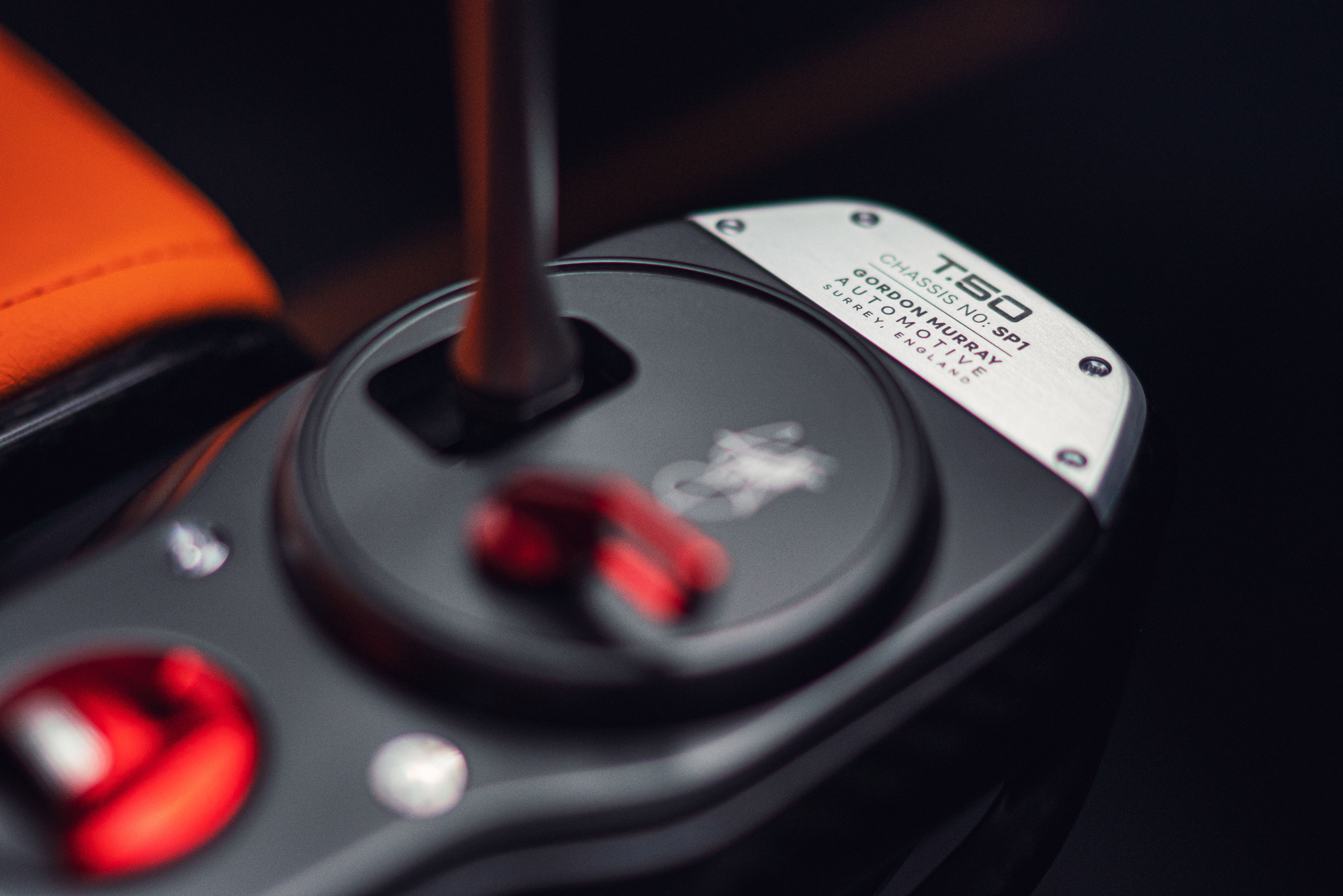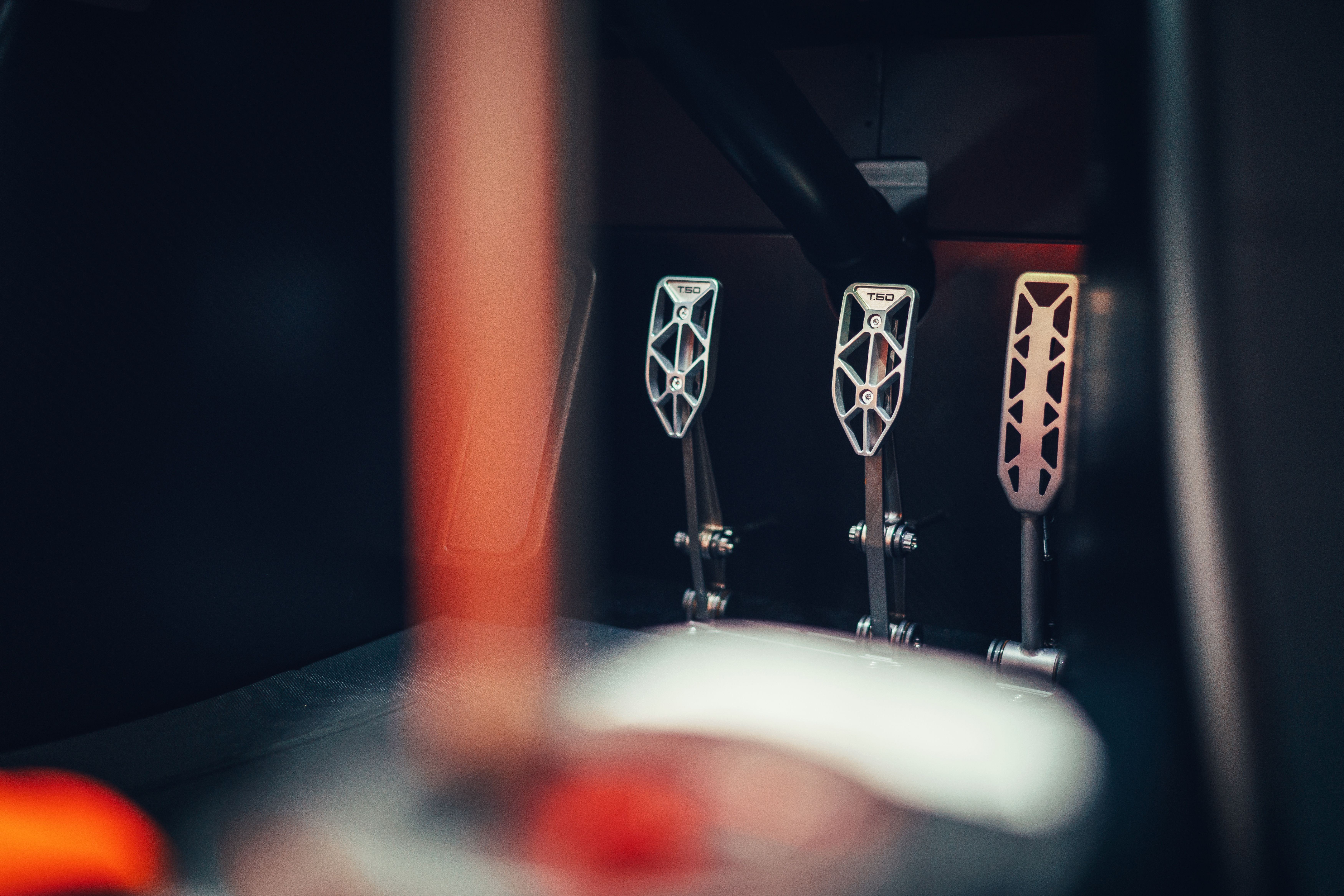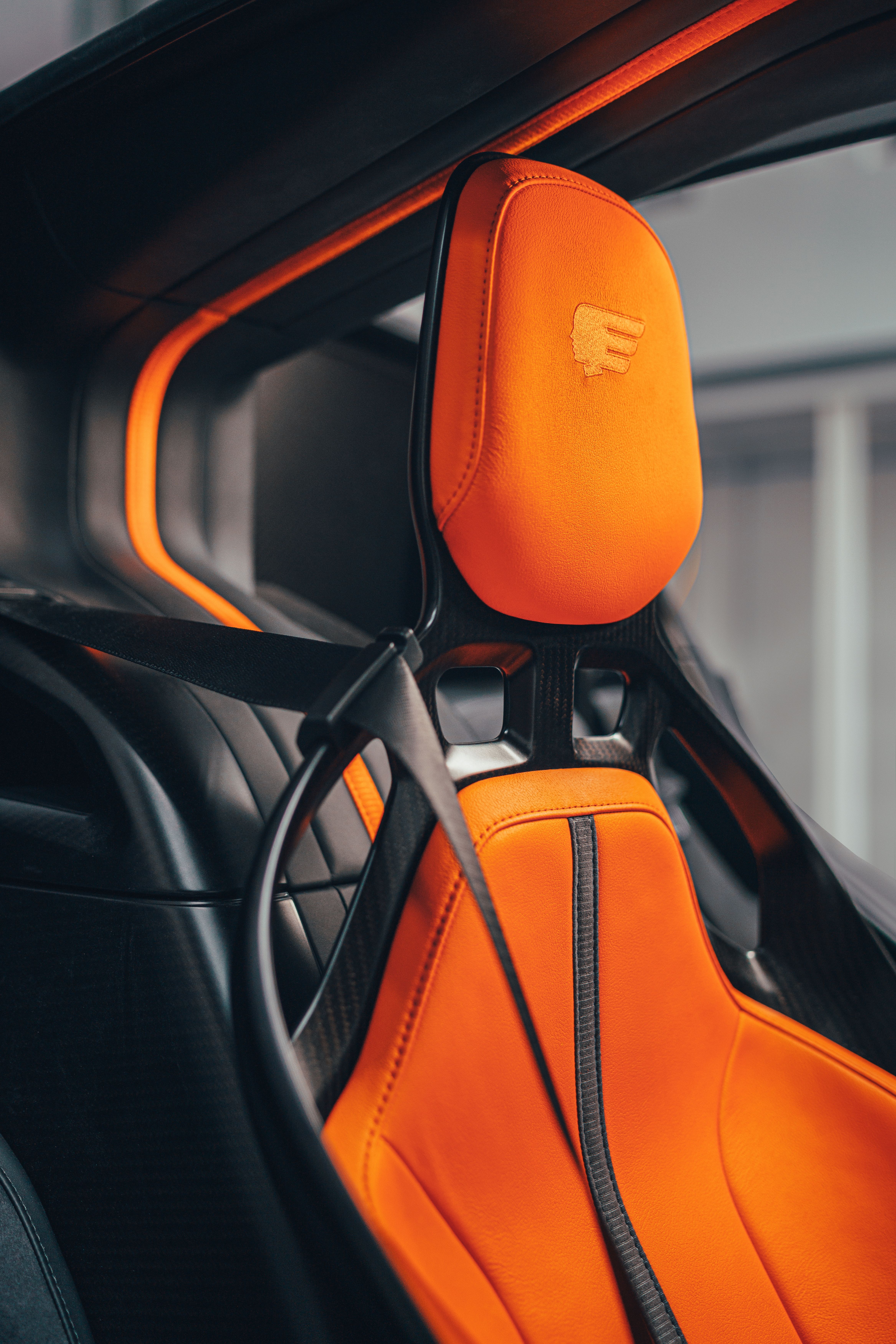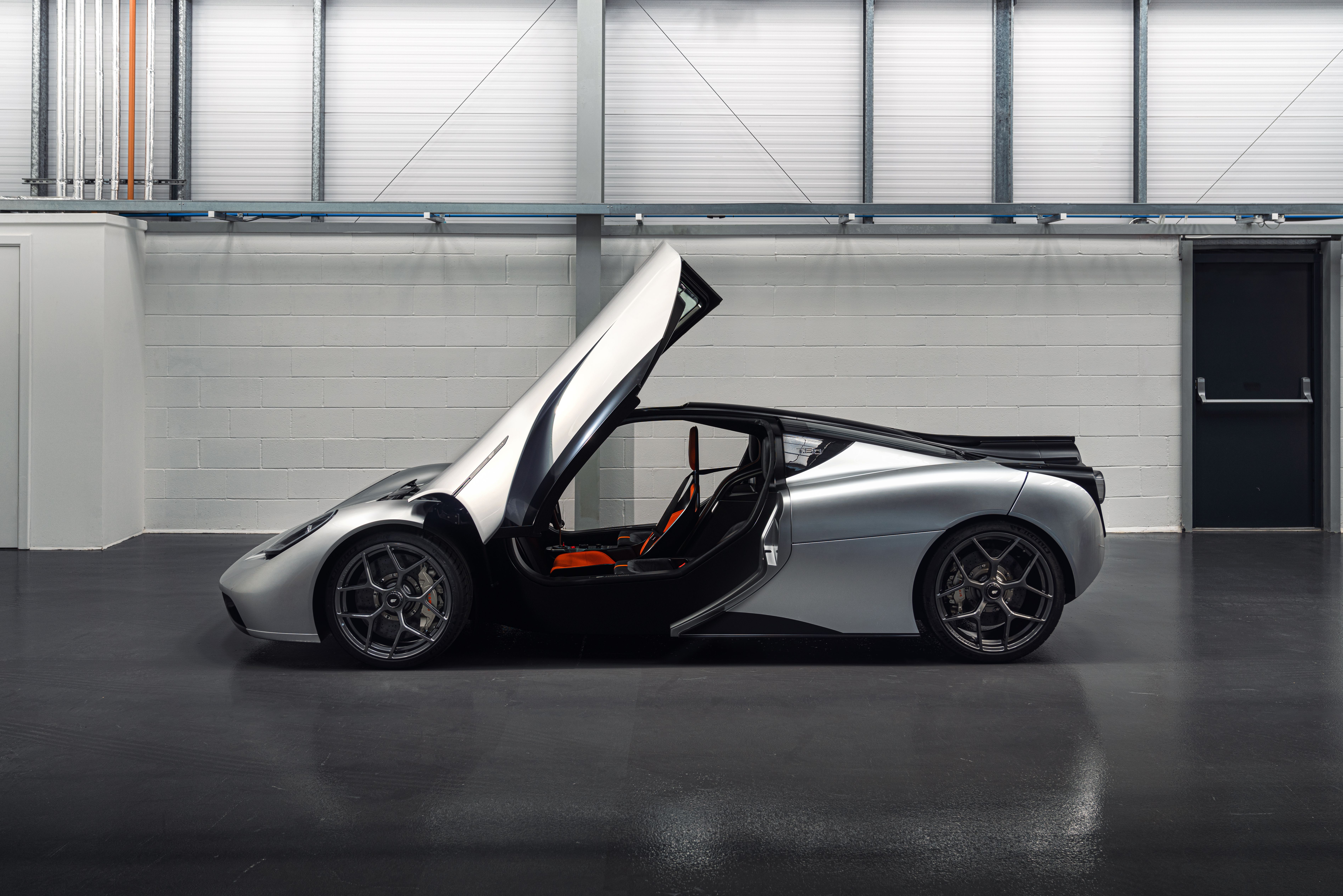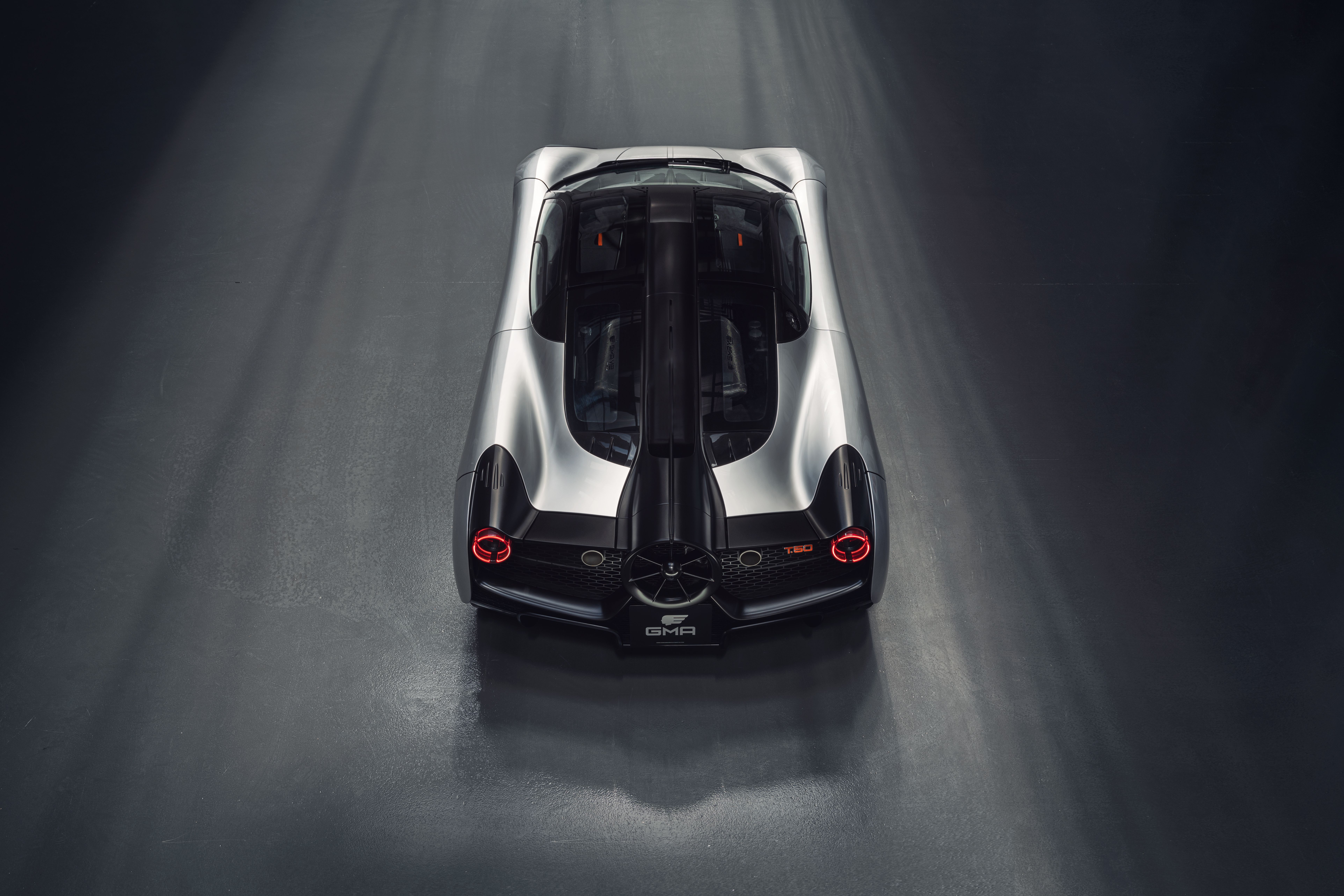The 2021 Gordon Murray Automotive T.50 is a supercar designed and built by Gordon Murray, the mastermind behind the iconic McLaren F1. A lightweight, aerodynamic car powered by a naturally aspirated V-12 engine, the T.50 was designed as a spiritual successor to the F1, with a focus on the driving experience rather than extreme performance. The T.50 shares many similarities to the old McLaren F1, but every aspect has been improved through the use of new-generation materials and modern technology. Let's find out more about the T.50, described as "the most driver-centric supercar ever built" in the review below.
2021 Gordon Murray T.50
- Make: Array
- Model: 2021 Gordon Murray T.50
- Engine/Motor: V12
- Horsepower: 690
- Torque: 334
- [do not use] Vehicle Model: Array
Exterior
Just like the McLaren F1 back in the day, the T.50 doesn't feature massive splitters, winglets all over the place, and a big rear wing. Its exterior is streamlined and clean, even though the T.50 is very aerodynamic. And that's because Murray is a genius and finds innovative solutions to every problem.
The T.50 looks a bit like the F1 on the outside. The front fascia seems inspired by the old supercar with big headlamps integrated into the upper fenders and a small front lid with similar shape, size, and placement. The way the windscreen flows into the front deck is also similar to the F1, but that's probably because these supercars share the same three-seat interior layout with a center-mounted steering wheel. The nose looks extremely simple for 2020 standards, with rectangular vents to the sides. There's no splitter and no winglets.
The T.50's profile is simple but beautiful at the same time. The beltline flows organically past the front wheel, it descends slightly in the door area and then works its way up to from the rear haunches before it drops abruptly with the rear fascia. The T.50 features dihedral doors that rise up and forward and an interesting character line that disappears toward the rear of the door only to show up again on the rear fenders. Again, aero features are rather subtle, with curved side skirts and vertical wings integrated into the body behind the front wheels.
The cabin is of the canopy variety, a standard design on modern supercars, and features a smaller horizontal window integrated into the door window, just like the McLaren F1. The slightly raised roof scoop that extends into a "spine" over the engine hood is yet another similarity to the 1990s supercar.
This fan revives a technology used decades ago in racing. It was first introduced by Chaparral on its 2J race car for the Can Am series and then used by Brabham on its BT46B Formula One car in 1978. The BT46B was designed while Gordon Murray was working with Brabham, so it's not all that surprising to see it on the T.50. A similar system was used on the McLaren F1 as well, but the fans were hidden beneath the rear haunches, so this innovation was overlooked.
So what does this fan do for the T.50? Well, it works as a ground-effect device in conjunction with underbody aerodynamics and two dynamic spoilers. It's powered by a 48-volt motor that spins at up to 7,000 rpm and basically eliminates the need for a rear wing or spoiler.
This aero system that includes the fan has six operating modes. In the default Auto setting, the car operates with passive ground-effect downforce, while Braking mode activates the fan to improve stability and braking power. The fan itself can shorten the braking distance from 150 mph to a full stop by almost 33 feet. In High Downforce mode, the fan spools up and helps increase downforce by 50 percent.
Streamline mode sets the fan to operate at high speed in order to draw air from the top deck to minimize drag while extending the trailing wake of the car to create a virtual longtail. This mode cuts drag by 12.5 percent, boosting straight-line speed and reducing fuel consumption.
The fan is flanked by round exhaust pipes that protrude from the honey-comb mesh that makes up almost the entire fascia. The round taillights mounted at the upper edges feature really thin LED bars. Below the fan, we can see the rear section of the drivetrain and a big diffuser with two distinct elements that guide air from under the car. The engine hood is made from two sections that open up like gullwing doors, leaving the central fin that guides air to the drivetrain in place.
The body is made almost entirely from high-grade carbon-fiber, while window glazing is 28-percent thinner than usual, both of which contribute to the T.50 extremely low weight.
Interior
When Murray began to develop the McLaren F1 in the late 1980s, his goal was to design it as a one-seater, just like a Formula One car. He eventually decided to add passenger seats but keep the center-mounted driver seat and steering wheel, so the F1 came with a unique 1+2 seating arrangement. The passenger seats flank the driver seat, but they're mounted a few inches rearward. Murray retained this layout for the T.50, which is now the third production and road-legal car with a 1+2 seating configuration. I say third because McLaren unveiled a second three-seat car, the Speedtail, in 2018.
Just like in the F1 and the Speedtail, the driver's seat is a full-fledged racing unit with heavy bolstering for solid lateral support. The passenger's seats are also sporty, but they feature a different design and provide a different seating position. They're obviously not as comfortable as the main seat, but get the job done. All three seats are made from carbon-fiber and weight only 28.6 pounds combined.
Just like the exterior, the interior is very clean in terms of design. The wraparound dashboard is as simple as they get, with the Alcantara wrapping disrupted only by the digital displays that replace the side mirrors. A narrow console placed to the right of the driver seat houses the old-school gear shifter and analog controls in the form of switches and buttons. The steering wheel is much simpler than on other supercars, with the spokes devoid of buttons. It also features a full rim rather than the Formula One-type "controller" seen in many high-performance cars.
Behind the wheel, there's a wide instrument cluster with an analog rev counter in the center and digital screens to the sides. But every control is analog, so there are no touchscreens. An additional set of knobs flank the screens and provide access to the heating and ventilation systems (right) and the wipers and lights (left). The pedals are made from titanium, and the sculpted design makes them 0.66 pounds lighter than those of the McLaren F1. It's not much, but it proves that Murray went out of his way to save as much weight as possible.
But Murray also focused on making the T.50 a supercar that's easy to live with. There's a combined 30 liters (one cubic foot) of interior stowage across five different compartments. There's one above each passenger's footrest, another under each passenger seat, plus one behind the driver's headrest. The T.50 doesn't have a proper trunk, but just like the F1, it features luggage compartments in the rear fenders. But unlike the F1, which offered luggage room behind lids placed on the lower fenders, the T.50 comes with vertical-load compartments accessible when you lift the split engine hood.
Luggage capacity totals 228 liters (eight cubic feet), which is basically identical to the McLaren F1 (227 liters). Additional space can be obtained by using the special suitcase that is sculpted to the shape of the passenger seat. With this suitcase, capacity increases to 288 liters (10.2 cubic feet). While not as spacious as the McLaren GT, which offers up to 20.1 cubic feet of storage room, the T.50 comes with a bit more luggage space than the Ferrari F8 Tributo, which packs 200 liters (seven cubic-feet).
While you find as much tech as in other modern supercars, the T.50 is more than suited for long trips. On top of the A/C system that will keep you warm or cool, the T.50 also features a premium audio system in the form of a 700-watt, 10-speaker unit created specifically for this car by Arcam.
Just like the F1, the T.50 will be customized to meet customer demand in terms of pedal placement and driver seat shape and configuration. Customers will also be able to pick for a wide variety of upholstery colors, as well as customize individual features. All told, each T.50 interior will be unique.
Drivetrain and Performance
In an era when most supercar manufacturers opt for forced induction, Gordon Murray decided to keep the T.50 naturally aspirated. Not just as a tribute to the McLaren F1, but also because Murray thinks that an engine needs to be naturally aspirated in order to be remarkable.
Murray said in a statement.
The 3.9-liter V-12 that motivates the T.50 was designed in cooperation with Cosworth. In case you're not familiar with the British firm, it designed Formula One engines from 1963 to 2006 and then again from 2010 to 2013. Teams powered by Cosworth, including Lotus, Matra, Tyrrell, and McLaren, have won eight manufacturers' championships. And this V-12 is far from mundane. Rated at 650 horsepower and 344 pound-feet of torque, it might not be as powerful as Lamborghini's V-12, but it's the lightest of its kind, and it revs up to 12,100 rpm. That's the highest redline of any production car and matches the revving capability of Formula One engines from the 1990s. Thanks to its 48-volt starter-generator, the engine is capable of generating 690 horsepower for short periods of time.
A completely bespoke engine, the Cosworth-GMA V-12 tips the scales at just 392 pounds. The block is made from a high-strength aluminum alloy, while the connecting rods, valves, and clutch housing are made from titanium. The engine is also compact and provides the lowest possible center of gravity thanks to a crank that sits just 3.3 inches from the bottom.
It uses gear-driven ancillaries for lightness and an uncluttered engine bay, while the semi-structural layout increases stiffness while avoiding the noise, vibration, and harshness typically found in fully structural mills.
The engine mates to a six-speed H-pattern manual transmission from X-trac with a narrow cross gate and a short-throw for crisp gear changes. It features five close ratios geared for acceleration and a longer sixth ratio for cruising. It weighs only 177 pounds.
That's a pretty amazing figure that no other supercar manufacturer is able to match today. In fact, the T.50 is 336 pounds lighter than the McLaren F1, itself an incredibly light car.
Compared to other supercars available right now, the T.50 is 850 pounds lighter than the McLaren Senna, 800 pounds lighter than the McLaren 765LT, and 1,000 pounds lighter than both the Ferrari F8 Tributo and the Lamborghini Huracan. To put things into an even better perspective, the T.50 is almost 200 pounds lighter than the Mazda MX-5 Miata, yet it delivers around four times more power.
Chassis and suspension
The Gordon Murray T.50 is built around a carbon-fiber monocoque, and it also features a carbon-fiber passenger safety shell. And because it's so light, it has a forged aluminum alloy, double-wishbone suspension setup in the front and rear with no electric or hydraulic components. The steering system is just as pure, with a simple rack-and-pinion setup that is unassisted at speed. Both are supposed to ensure an engaging driver feel. However, the T.50 is equipped with a low-speed power assist system for easier parking maneuvers.
Stopping power comes from the latest-generation Brembo six-piston, air-cooled aluminum alloy calipers in the front and similar, four-piston brakes in the rear. Both are paired to Brembo carbon-ceramic discs as standard. Although most supercar makes commission bespoke tires for their cars, Murray opted for the slightly more mundane Michelin Pilot Sport 4 S rubber. The company says it has taken this route in order to avoid exposing its customers to the costly replacement of bespoke tires.
Is the Gordon Murray T.50 better than the Lamborghini Avendator S?
The Aventador isn't as exclusive as the T.50, and it's been around for almost ten years, but it's one of the very few supercars that still features a naturally aspirated V-12. The latest Aventador S features a 6.5-liter V-12 engine that delivers 730 horsepower, so it's a bit more powerful. On the flip side, it's notably heavier at almost 4,000 pounds, so it's not necessarily faster. But it's notably more affordable at less than $500,000.
Read our full story on the Lamborghini Avendator S.
Is the Gordon Murray T.50 better than the McLaren Speedtail?
Yes, the Speedtail is a completely different animal. It features a hybrid drivetrain that generates a whopping 1,035 horsepower, it's longer, and it tips the scales at more than 3,000 pounds. However, it features the same three-seat layout as it's McLaren's very own successor to the iconic F1. It's also almost as exclusive as the T.50 with just 106 units on the production line and almost as expensive with a starting price of $2 million.
Read our full review of the Mclaren Speedtail.
Is the Gordon Murray T.50 better than the McLaren F1?
Yes, it's apples to oranges again, but the F1 is actually the closest thing you can buy. It was designed by the same man, it's also naturally aspirated and features three seats, and it provides the purest and most thrilling driving experience. The good news is that while the T.50 is already sold out, you can still buy an F1 off the used car market. Granted, you'll have to wait to find one, but they still come up for sale from time to time. The bad news is that an F1 will set you back more than a T.50. The standard F1 may not be as expensive as the rare LM and GTR models, which usually go for more than $10 million, but it will still set you back at least $4 million.
Read our full story on the McLaren F1.
Conclusion
The T.50 isn't as spectacular as other modern supercars when it comes to power and performance, but it's exactly what Murray wanted. In a market flooded with performance cars packed with electronic devices, Murray set out to design the perfect old-school supercar for the 21st century. And he succeeded by creating a better and more advanced McLaren F1 almost 30 years later. Just like its spiritual ancestor, the T.50 brings many innovations to the market, including a unique rear-mounted fan that provides the most advanced and effective aerodynamics ever seen on a road car. The T.50 might not outshine the iconic F1 anytime soon, but it might just be the last pure V-12 supercar we ever see - unless Gordon Murray designs a new one.
FAQ
Q: Is the Gordon Murray T.50 more powerful than the McLaren F1?
Sure, it's a bit silly to compare a car from the early 1990s to one from 2020, but since the T.50 is a spiritual successor to the F1, it's a comparo we need to do. The F1 also featured a V-12, but it was a larger, 6.1-liter unit developed by BMW. The F1 came with 618 horsepower and 479 pound-feet of torque. That's 32 horses below the T.50, not counting the extra power from the 48-volt system, but an extra 135 pound-feet of torque.
Q: How fast is the Gordon Murray T.50?
We don't know how fast the T.50 is yet because the company has yet to release such figures. However, Gordon Murray made it clear that it's not chasing top speed figures with the T.50, since its engine was "designed to deliver optimum performance, not to hit prescribed power, speed or acceleration target."
If you're still looking for figures, it's safe to say that the T.50 needs less than three seconds to hit 60 mph while, while top speed will probably exceed the 200-mph mark. But we should find out more about that when the first T.50s reach their customers.
Q: How much does the Gordon Murray T.50 cost?
Gordon Murray Automotive will build only 100 units of the T.50, making it one of the most exclusive supercars around. The T.50 is also expensive, coming in at £2.36 million (around $3.1 million) before options and taxes. Depending on where you live, a T.50 could cost up to £2.9 million (about $3.8 million), including taxes.
Q: Is the Gordon Murray T.50 notably more expensive than other supercars?
It depends on which cars we compare it to. If we consider the T.50 a competitor for the likes of the McLaren 720S and Ferrari F8 Tributo, which offers similar power with turbo V-8 engines, the T.50 is painfully expensive. Both the 720S and F8 Tributo barely hit the $300,000 mark. On the other hand, we have hypercars with more than 1,000 horsepower from Bugatti, Koenigsegg, and McLaren that also cost millions of dollars.
Q: Does the Gordon Murray T.50 have any competitors?
Before we proceed with any comparison, it's important to note that the T.50 is a unique concept. It's one of the very few supercars that still feature naturally aspirated power, it's actually unique in its simplified construction with not many electronic aids, but it's pretty expensive because everything in it is bespoke and it's not backed by a big company. So it doesn't really have a direct competitor. But there are a few rivals to consider in certain departments.

